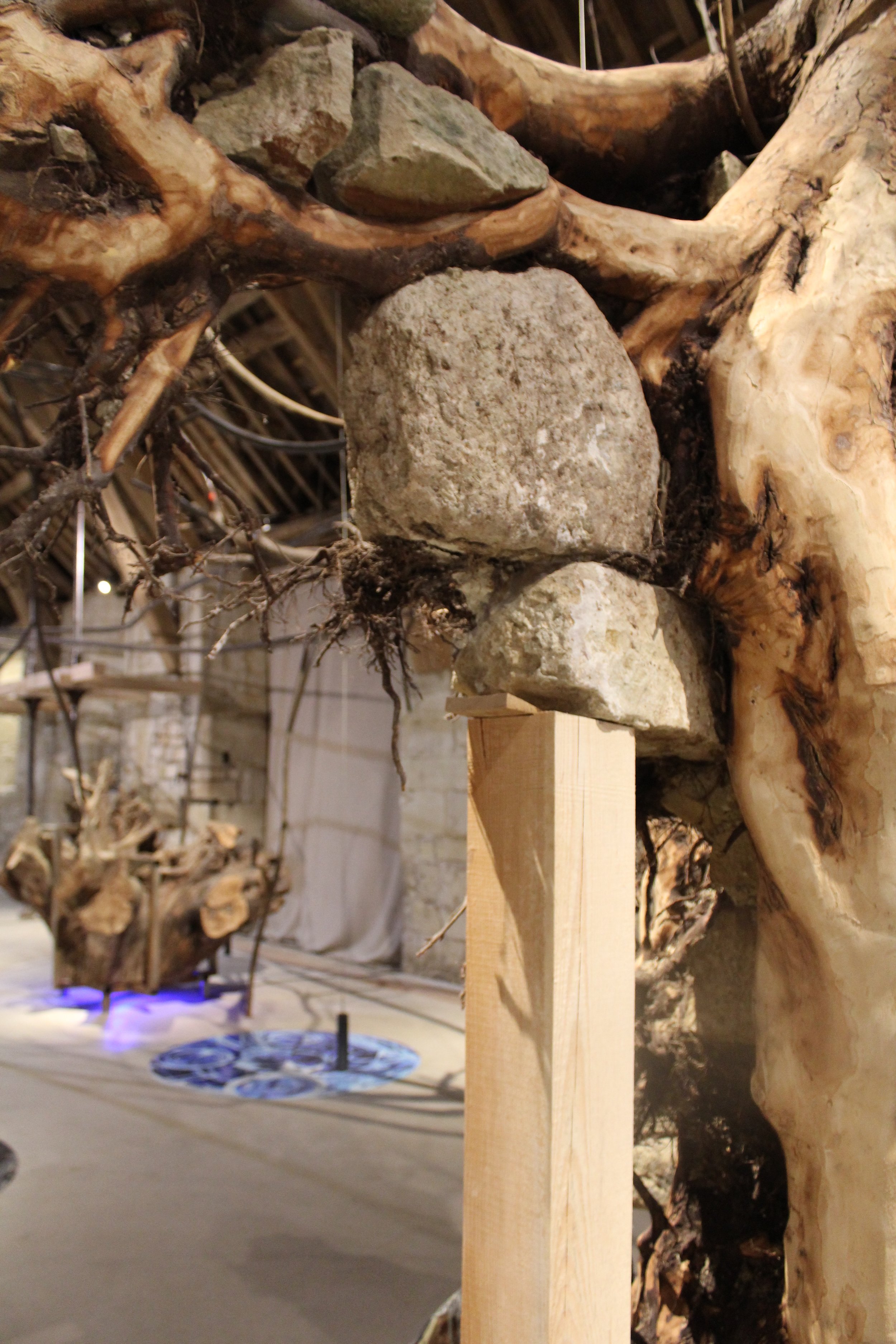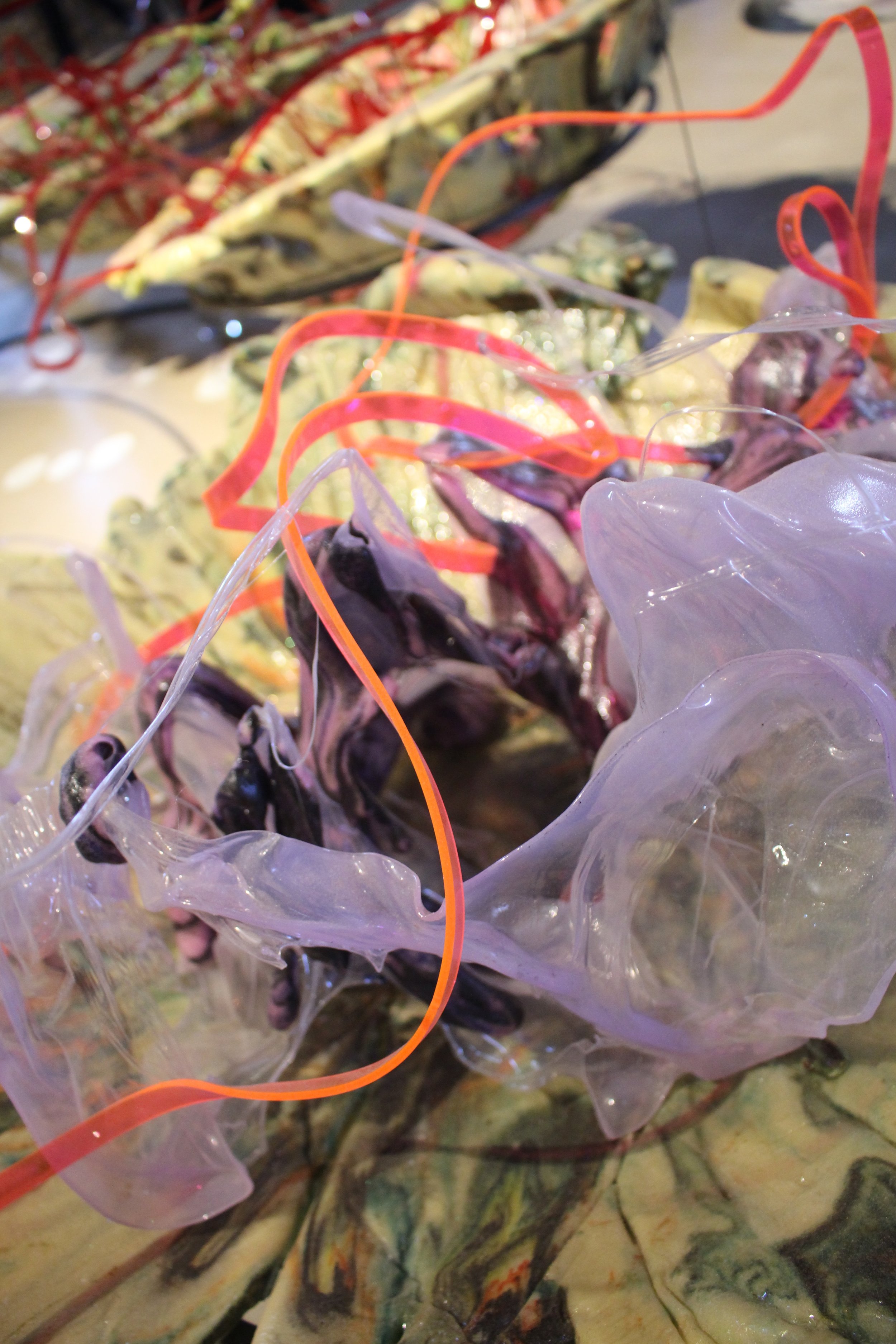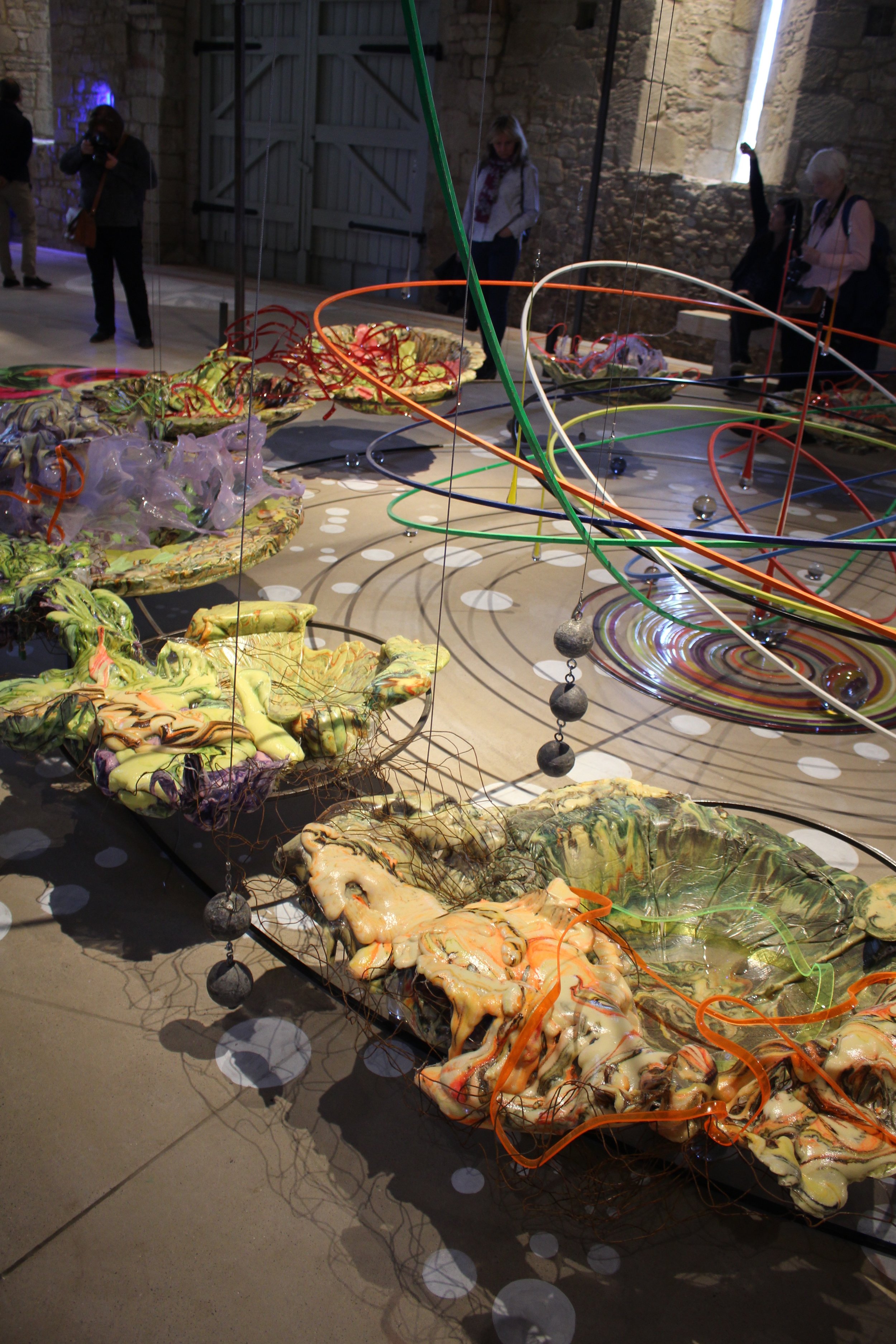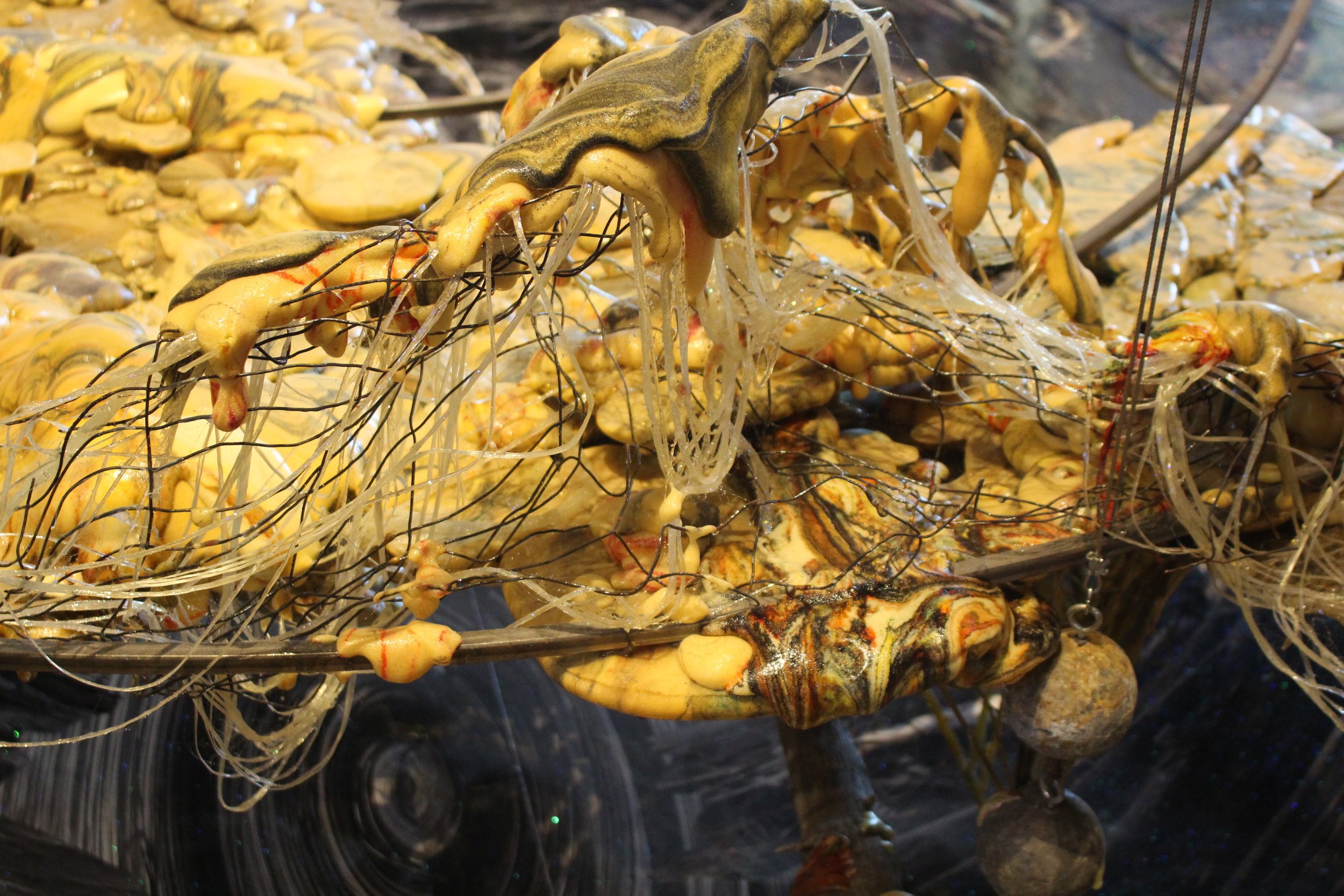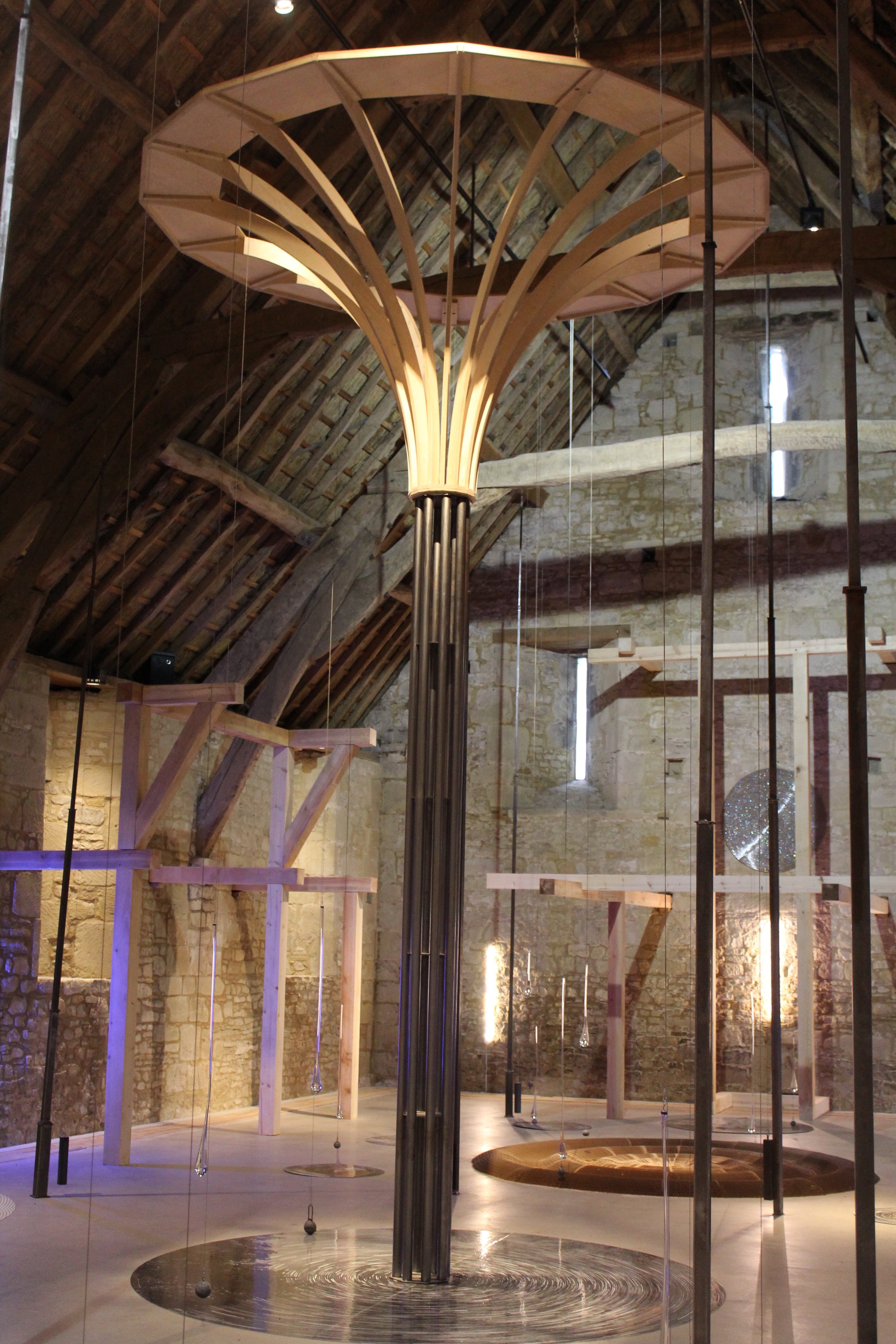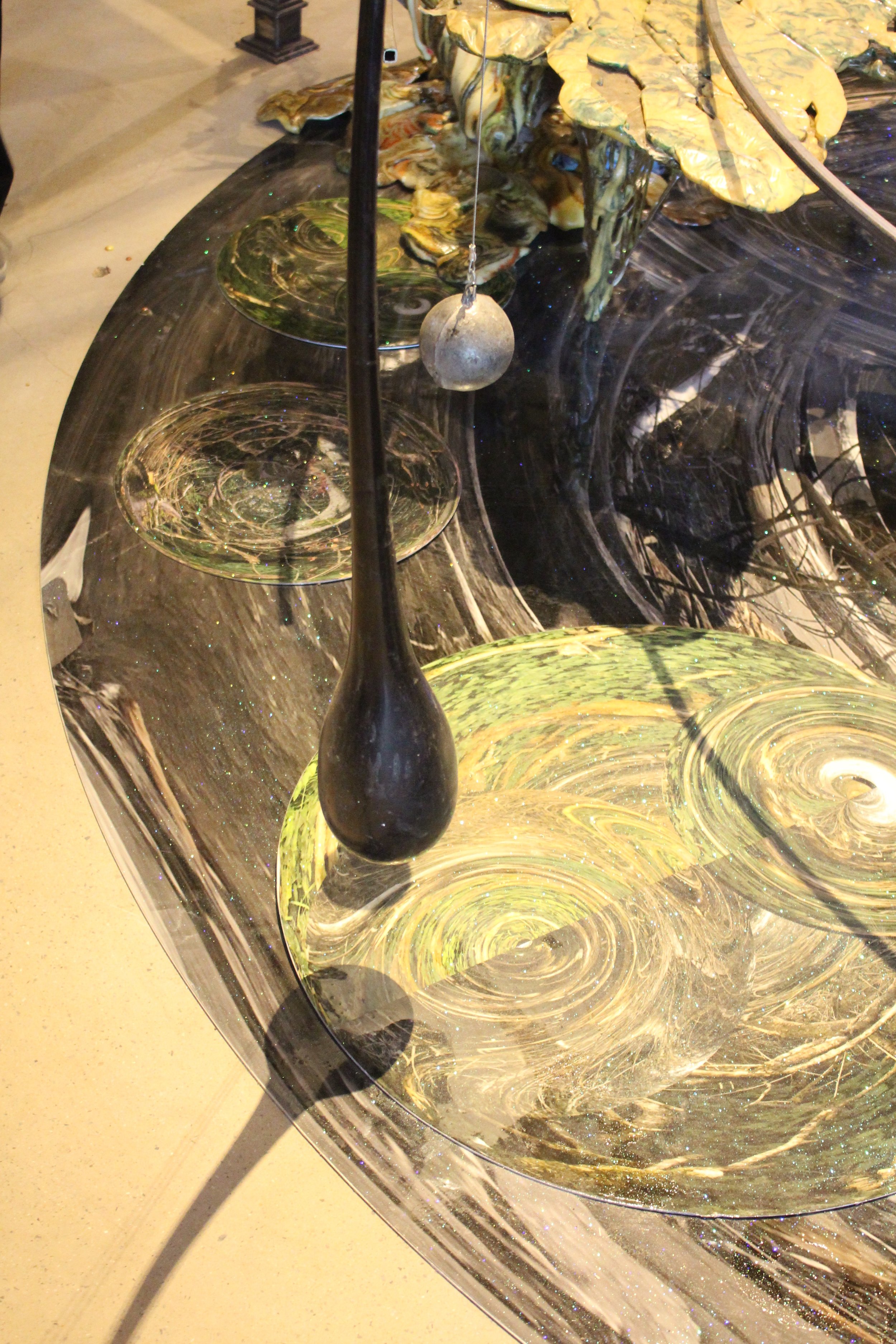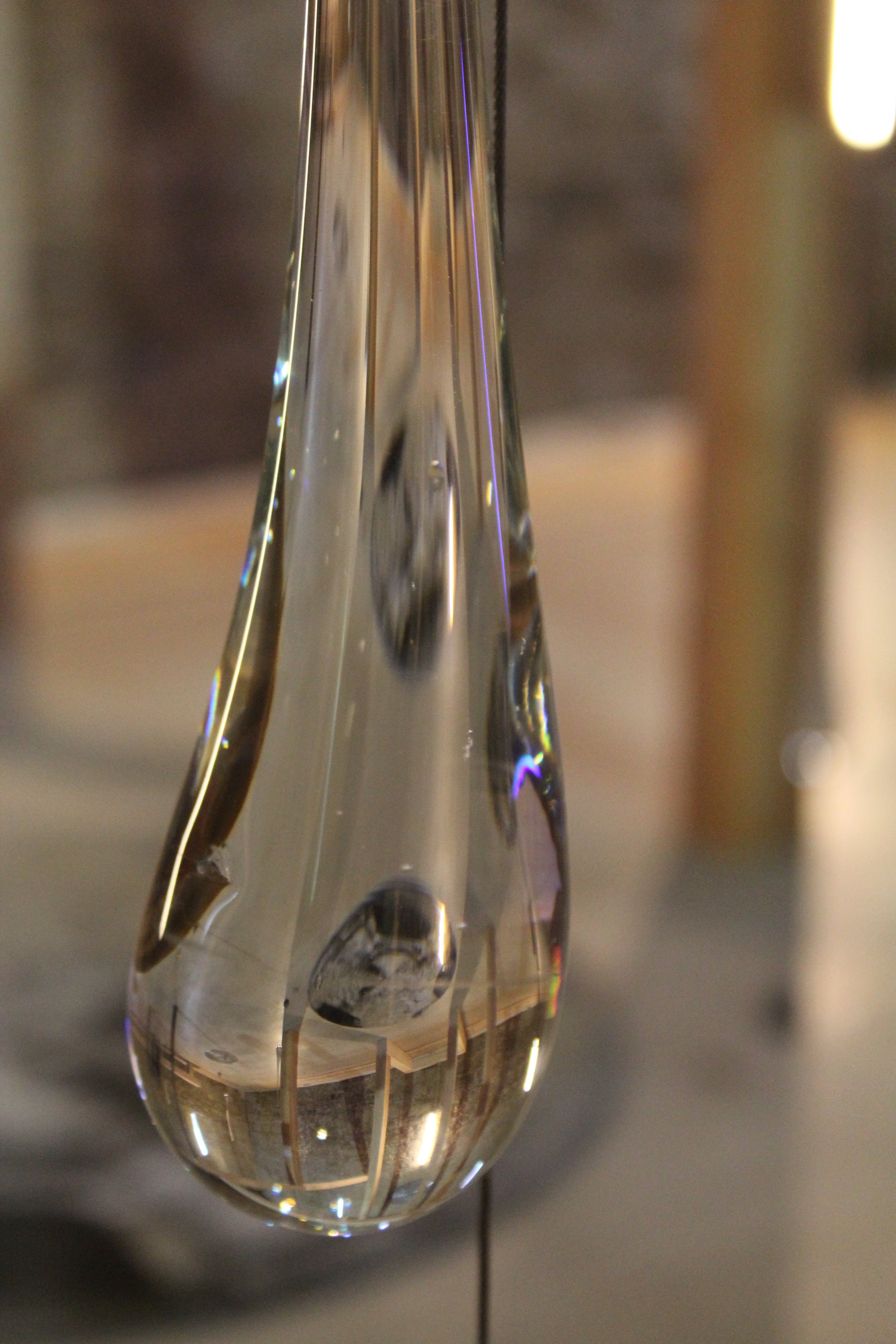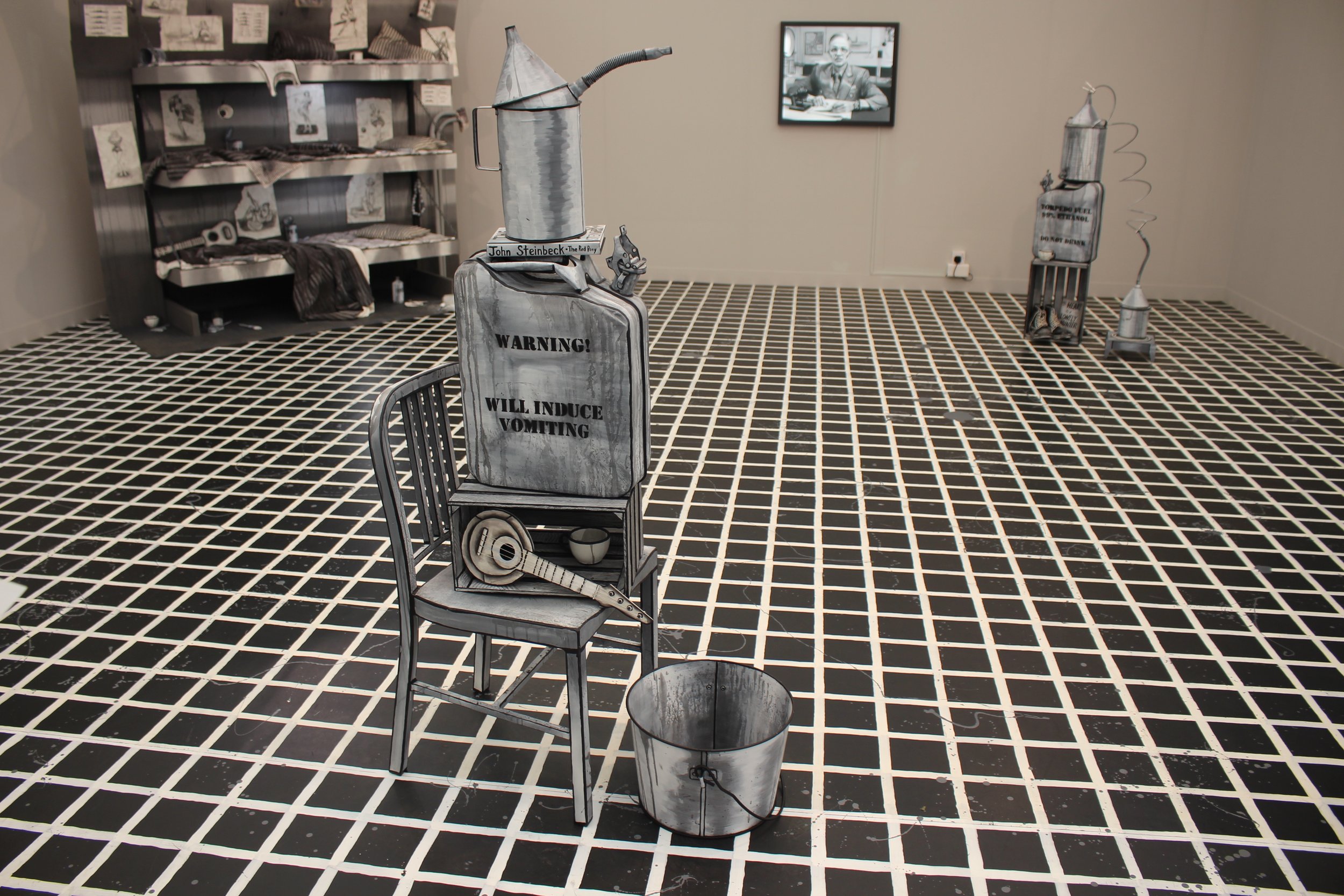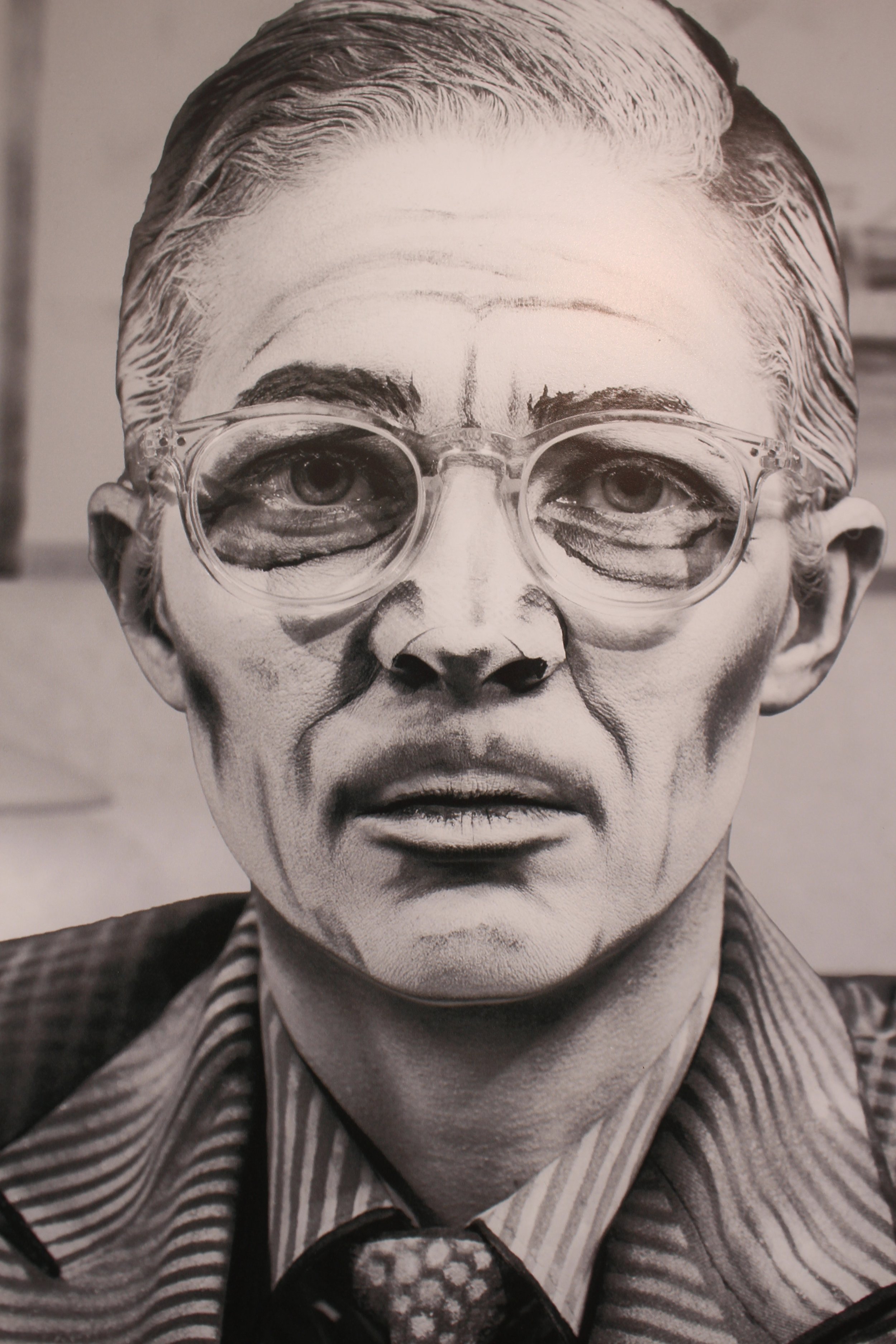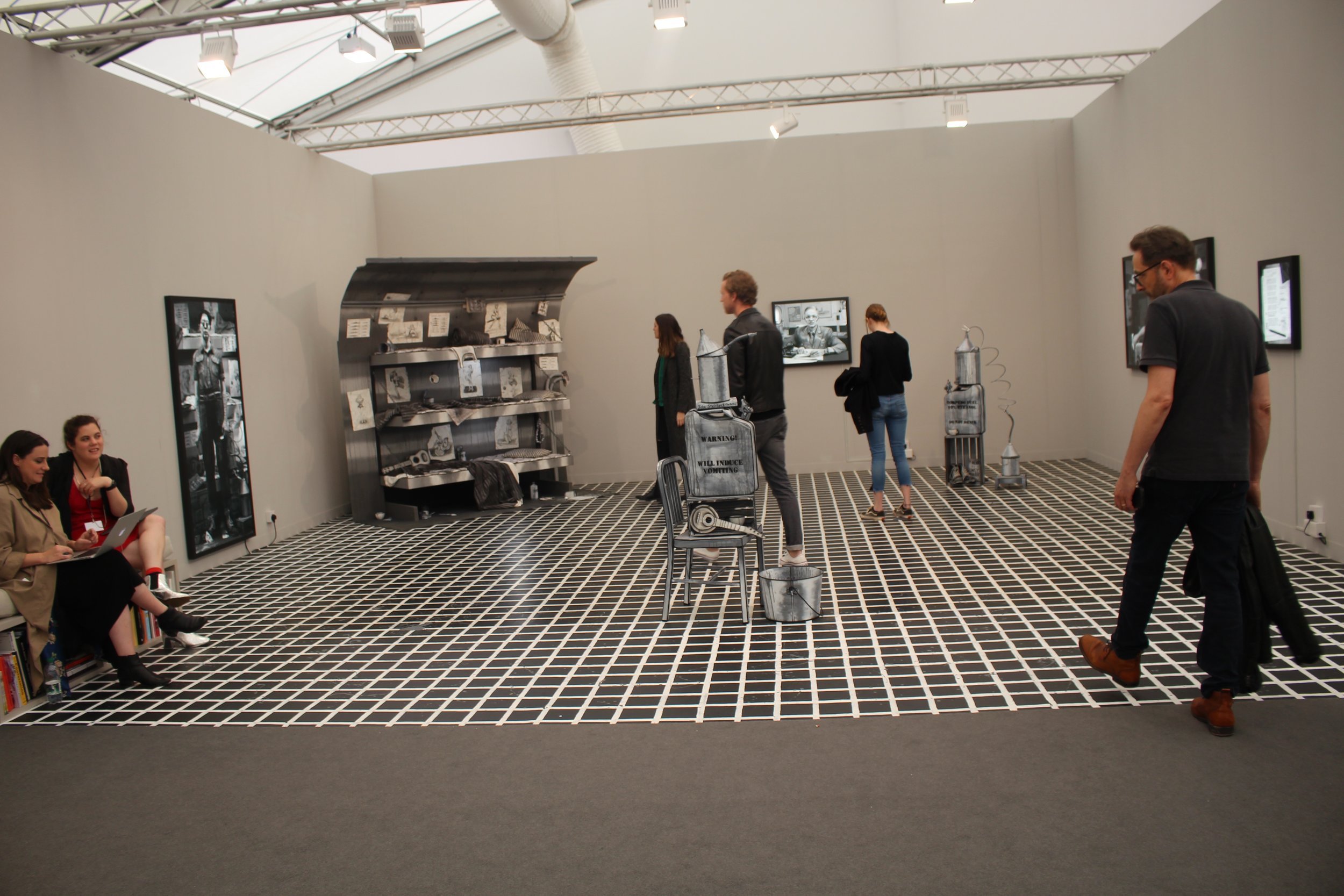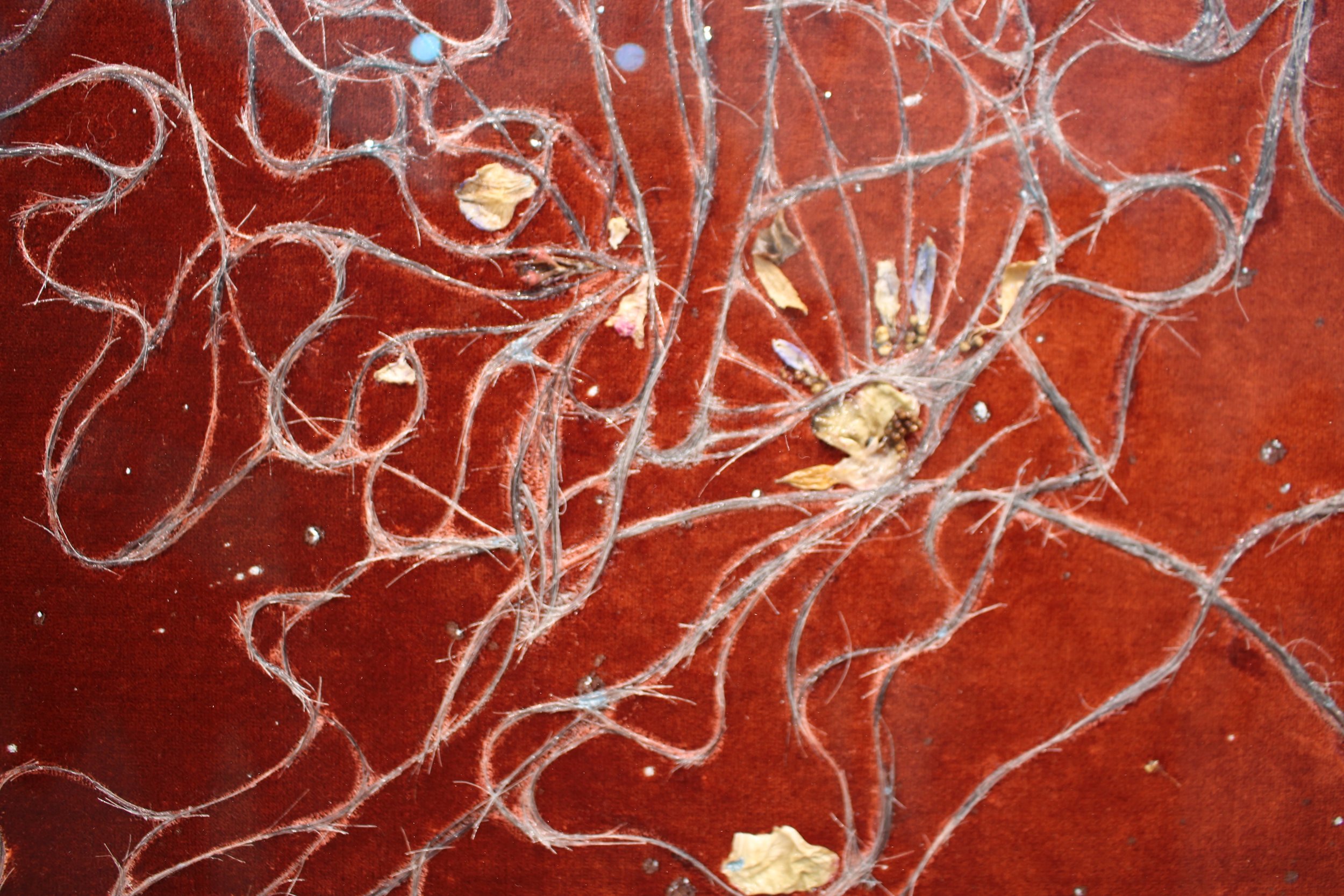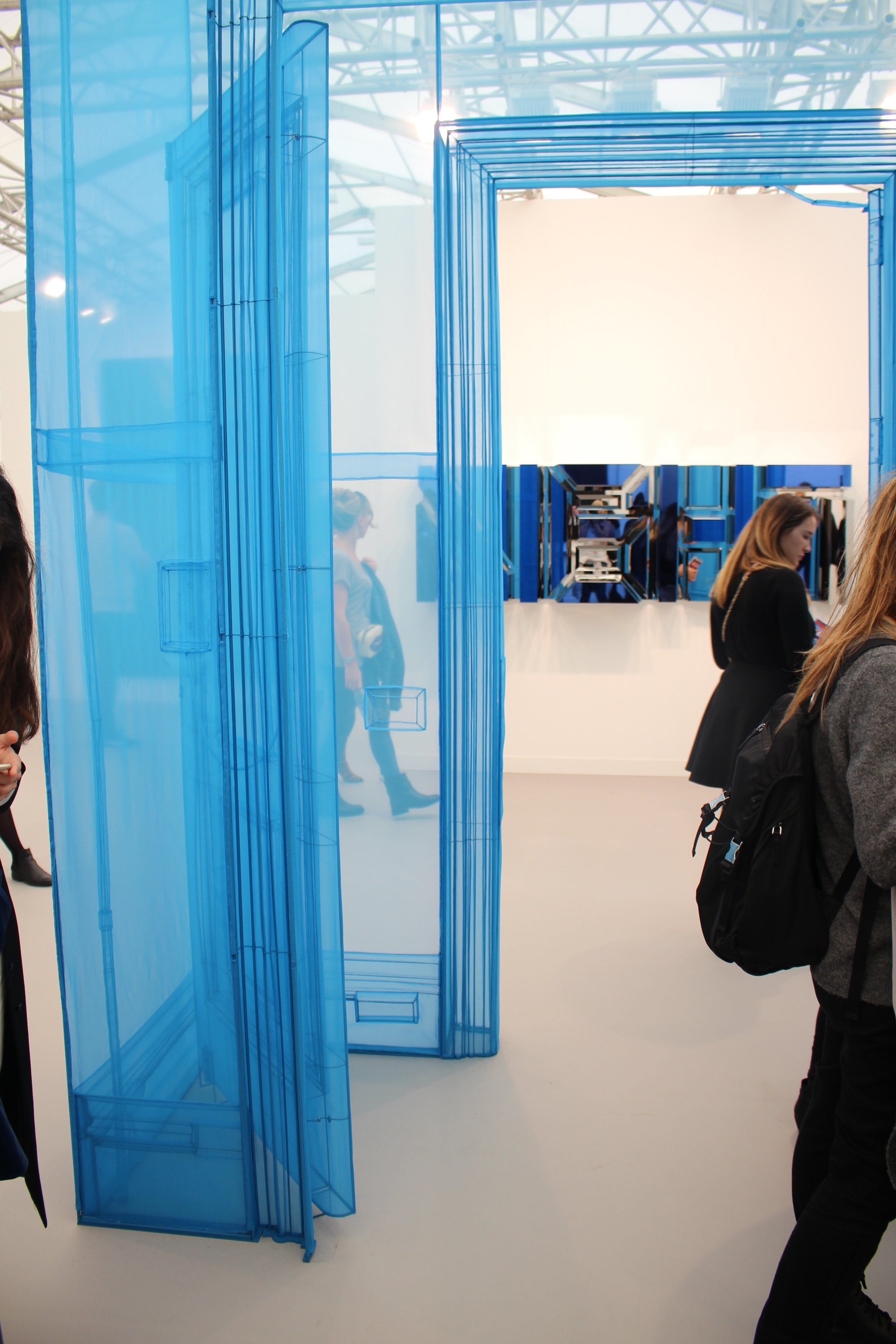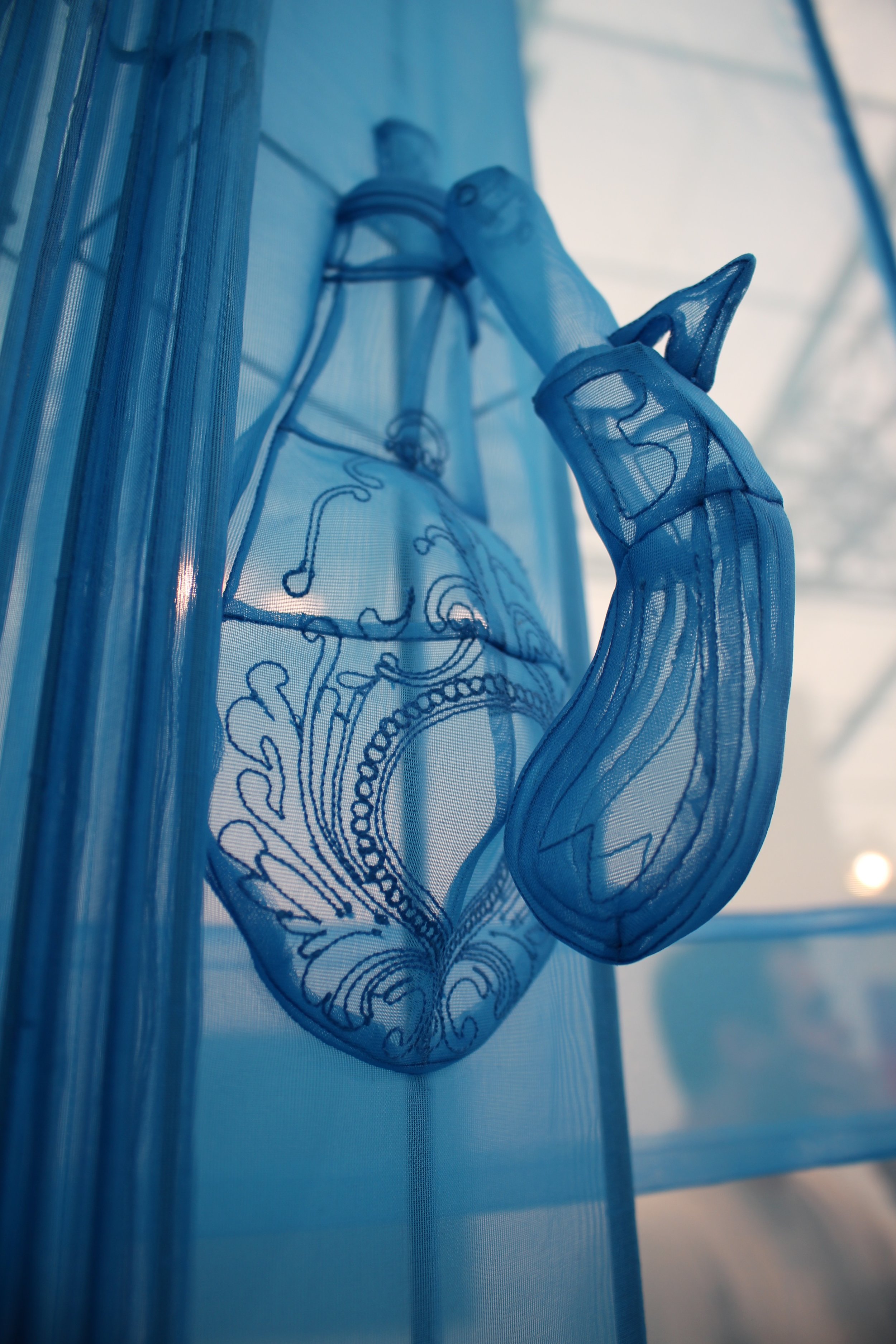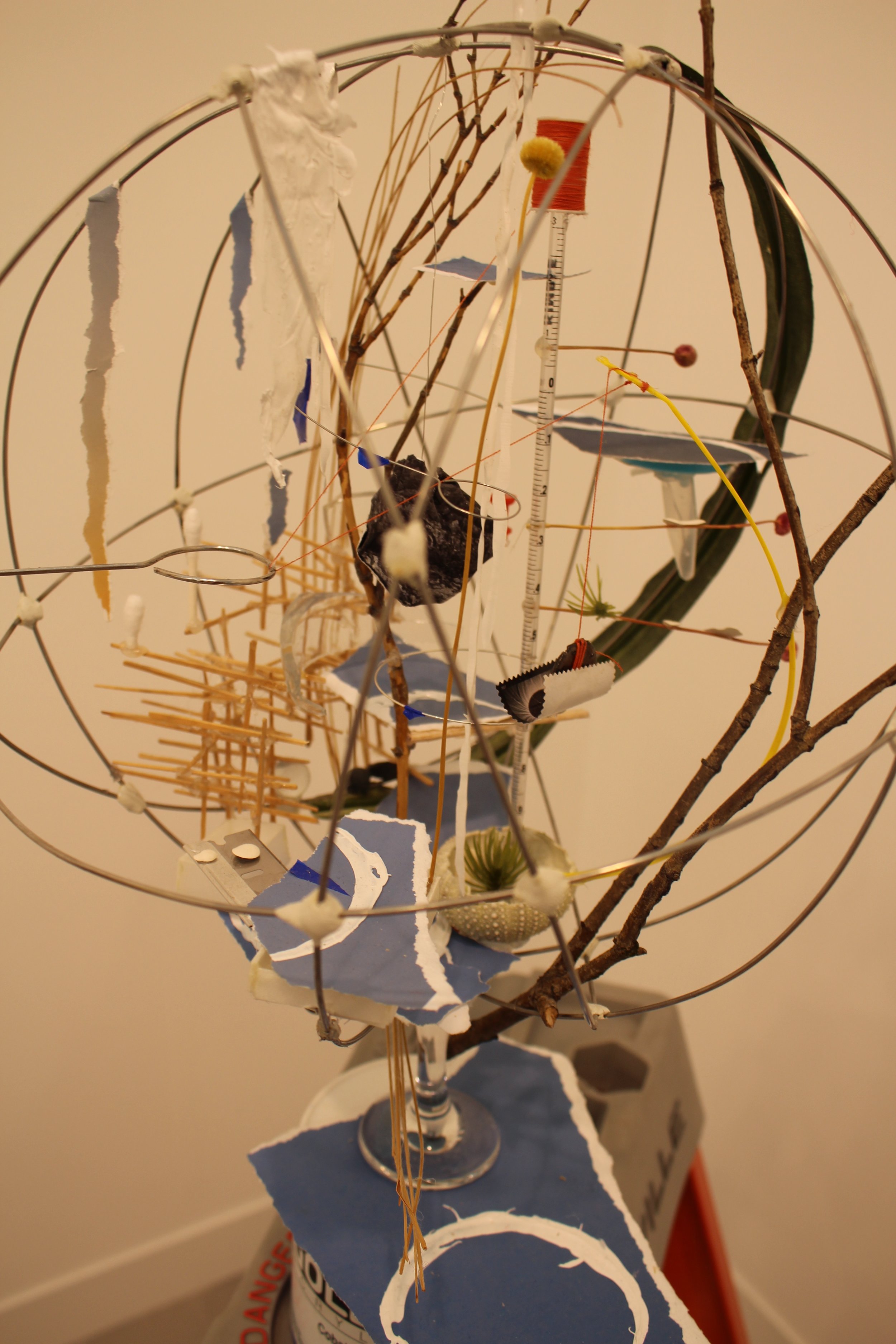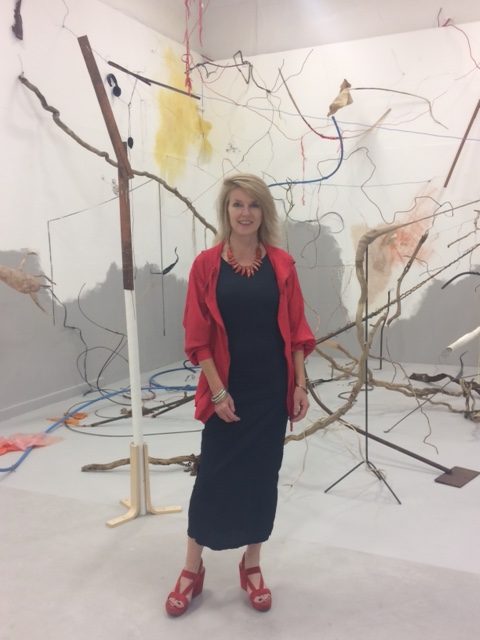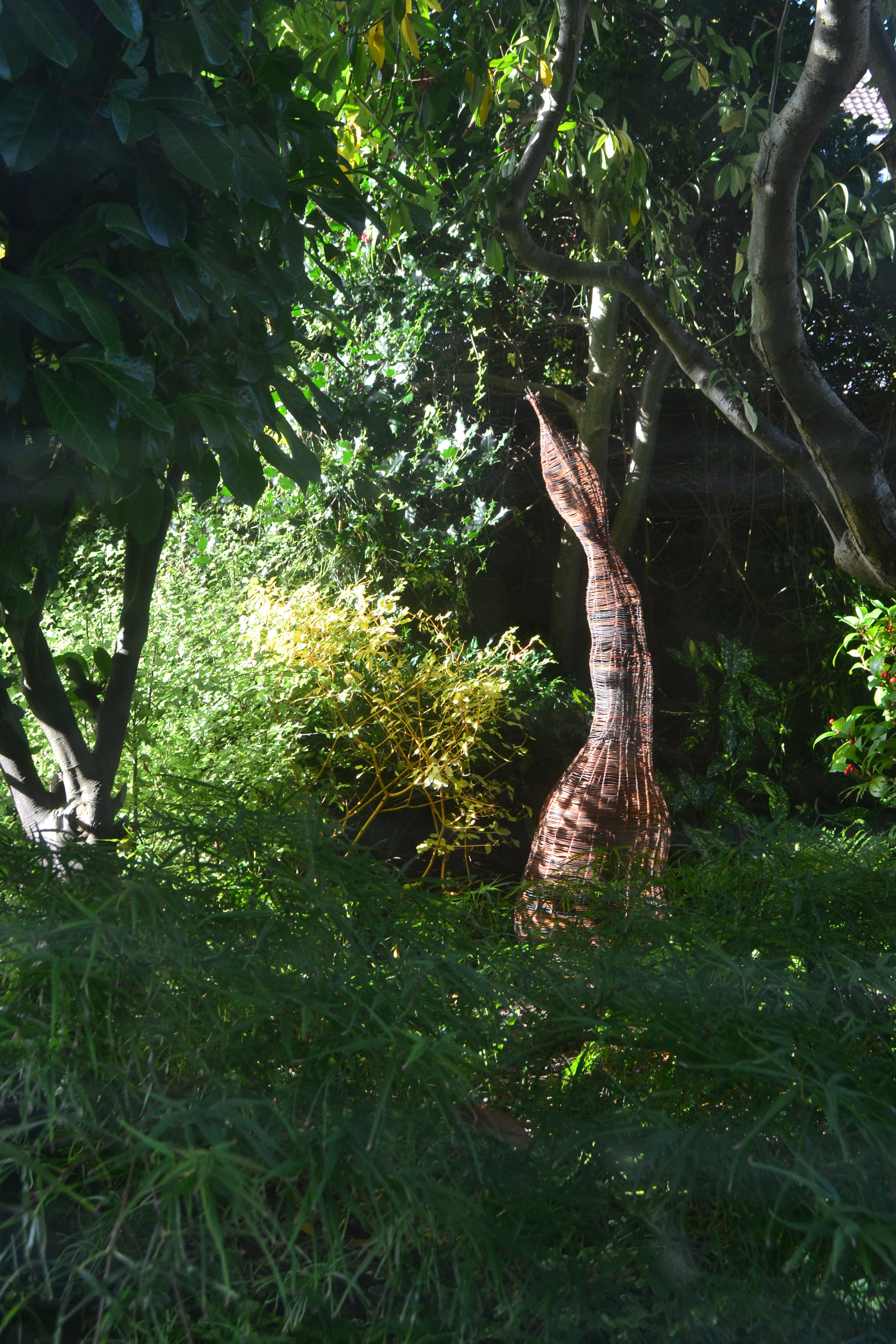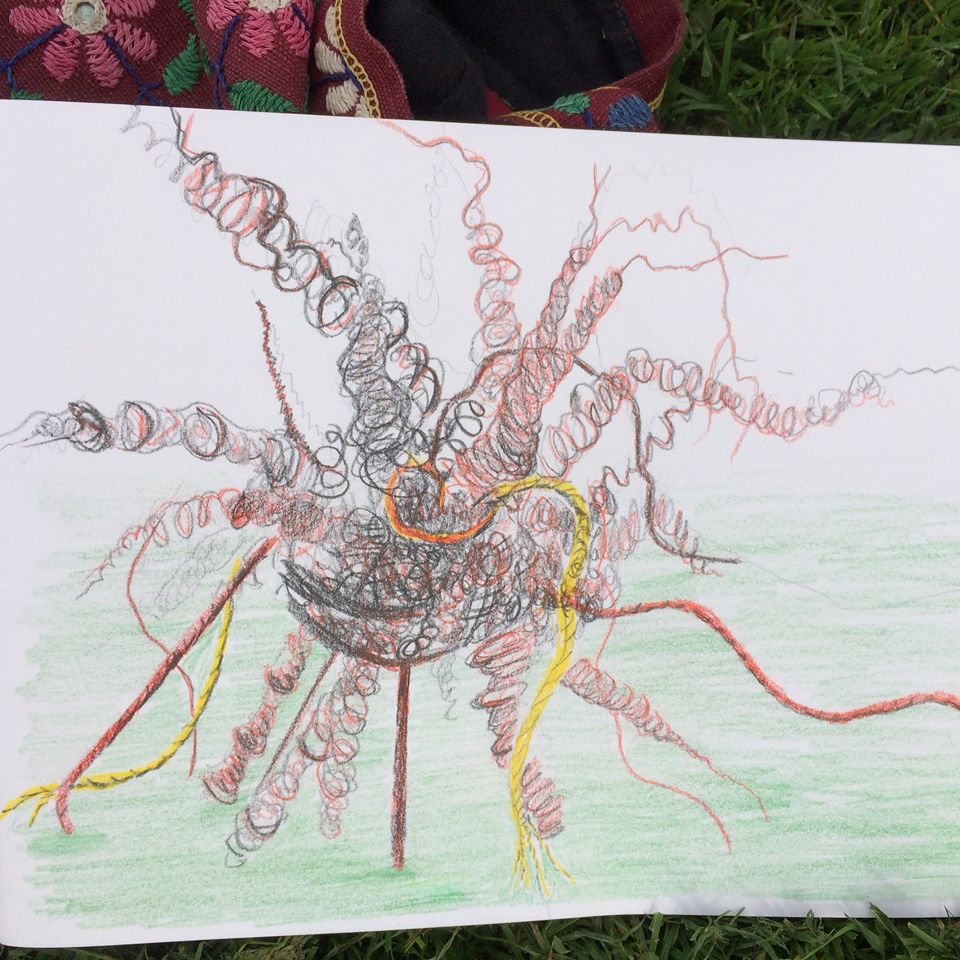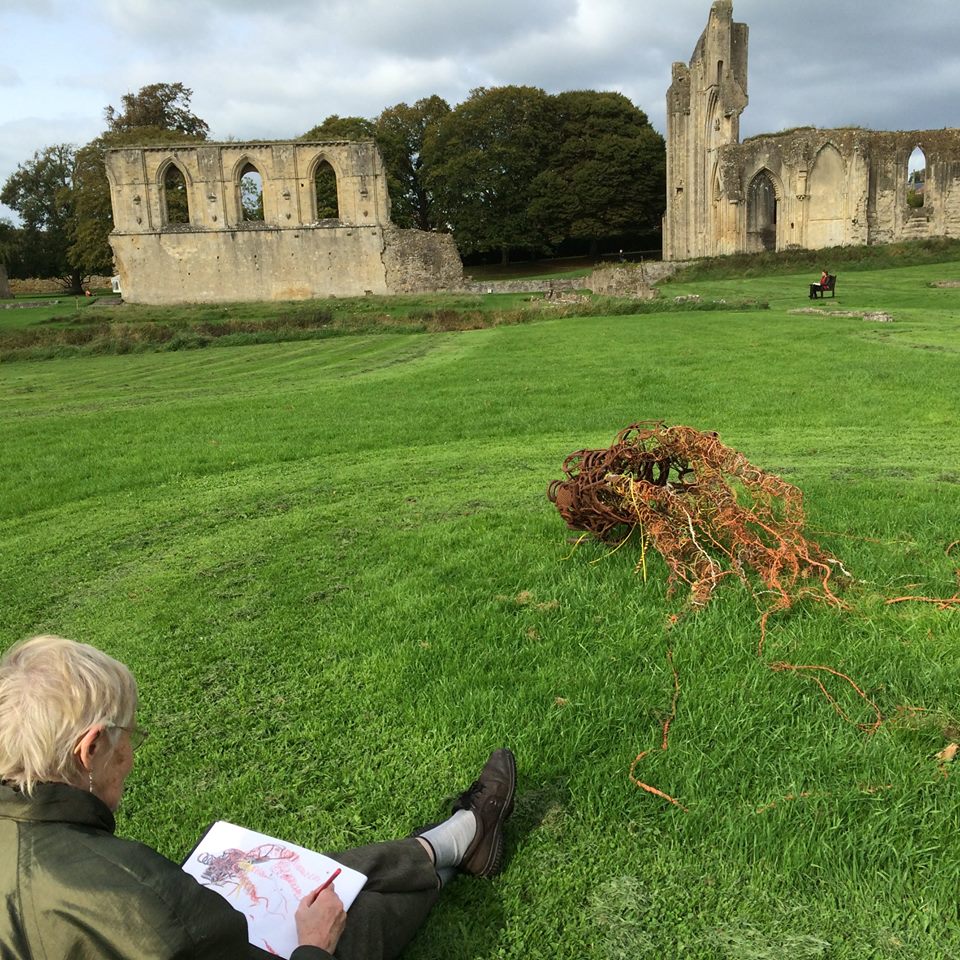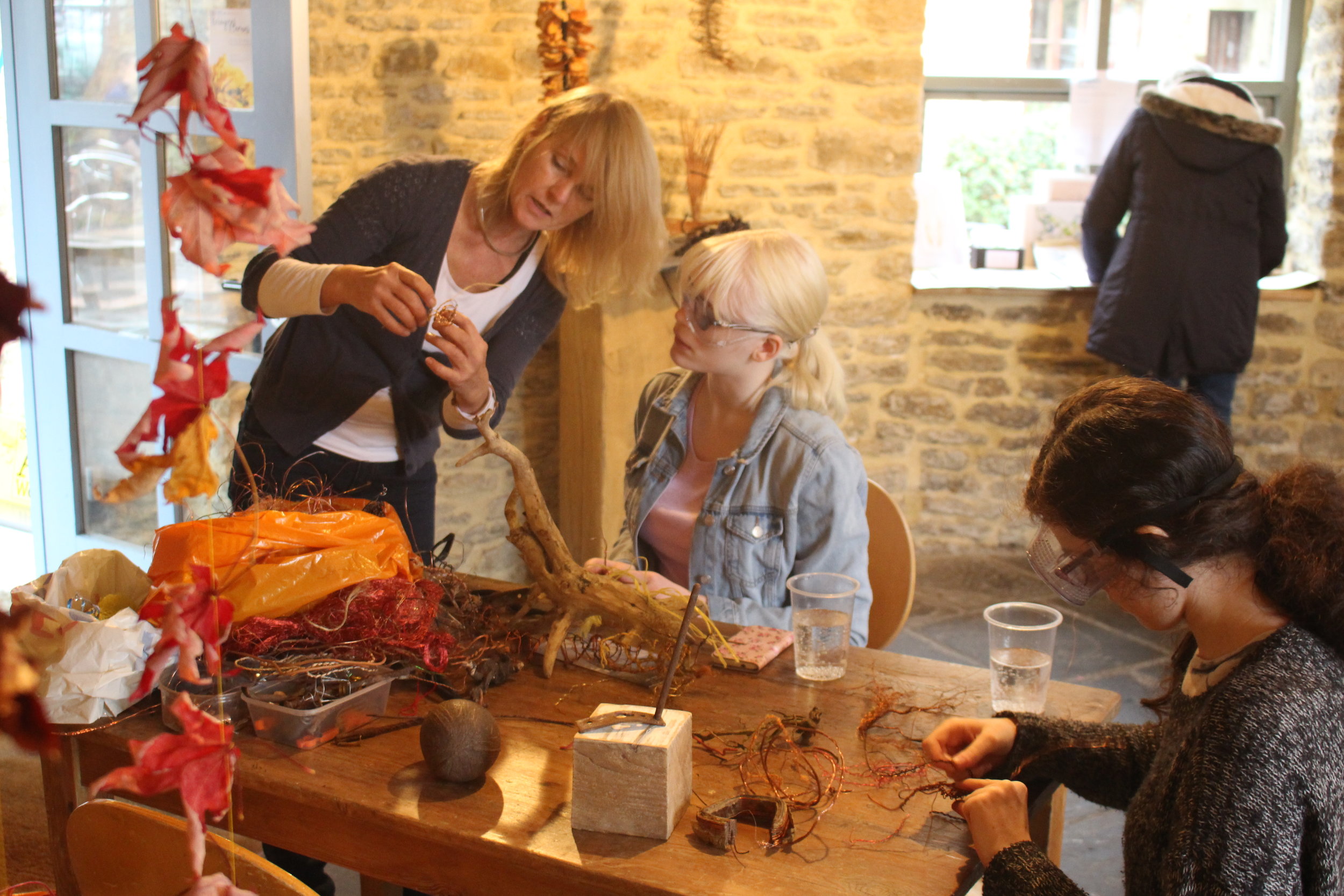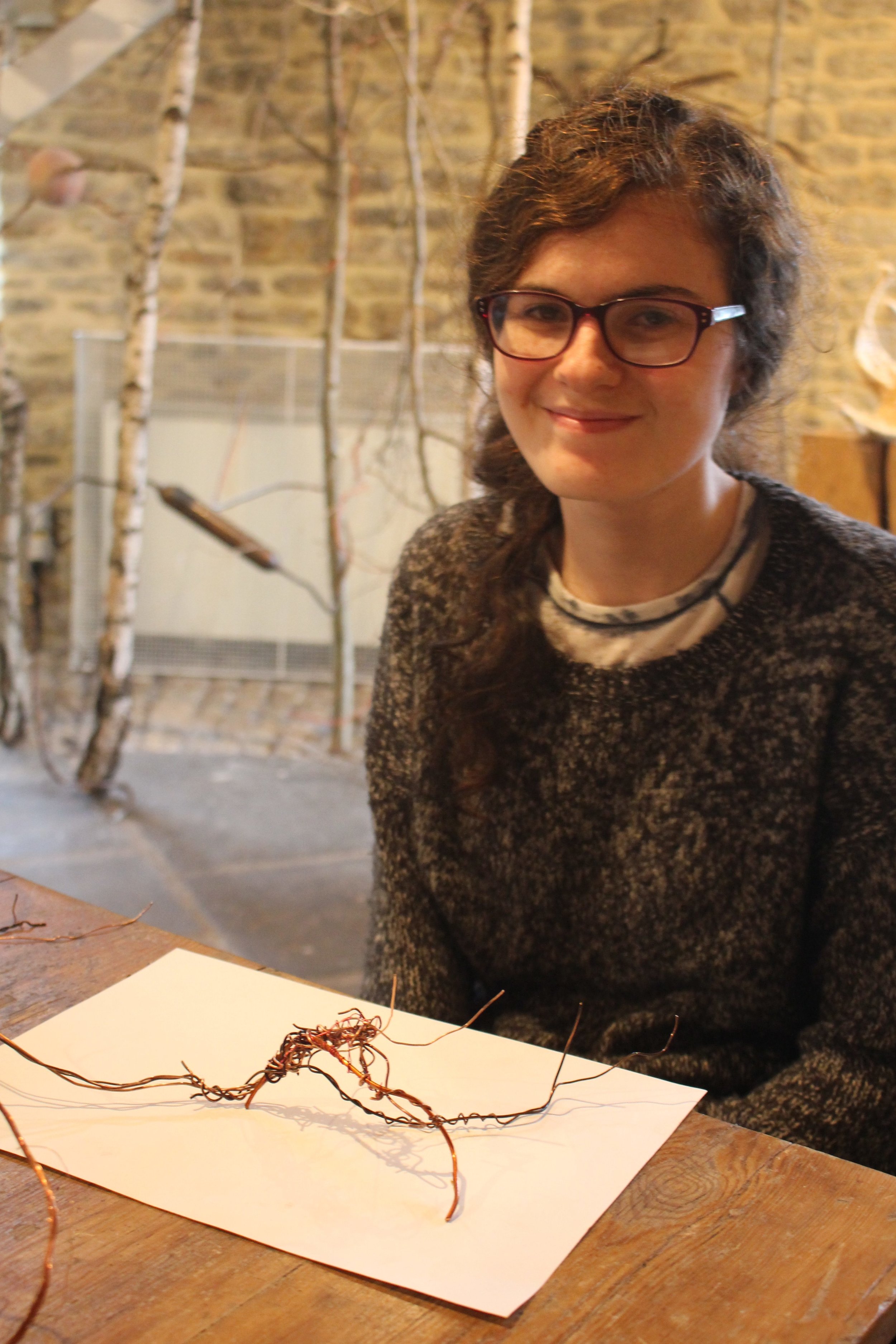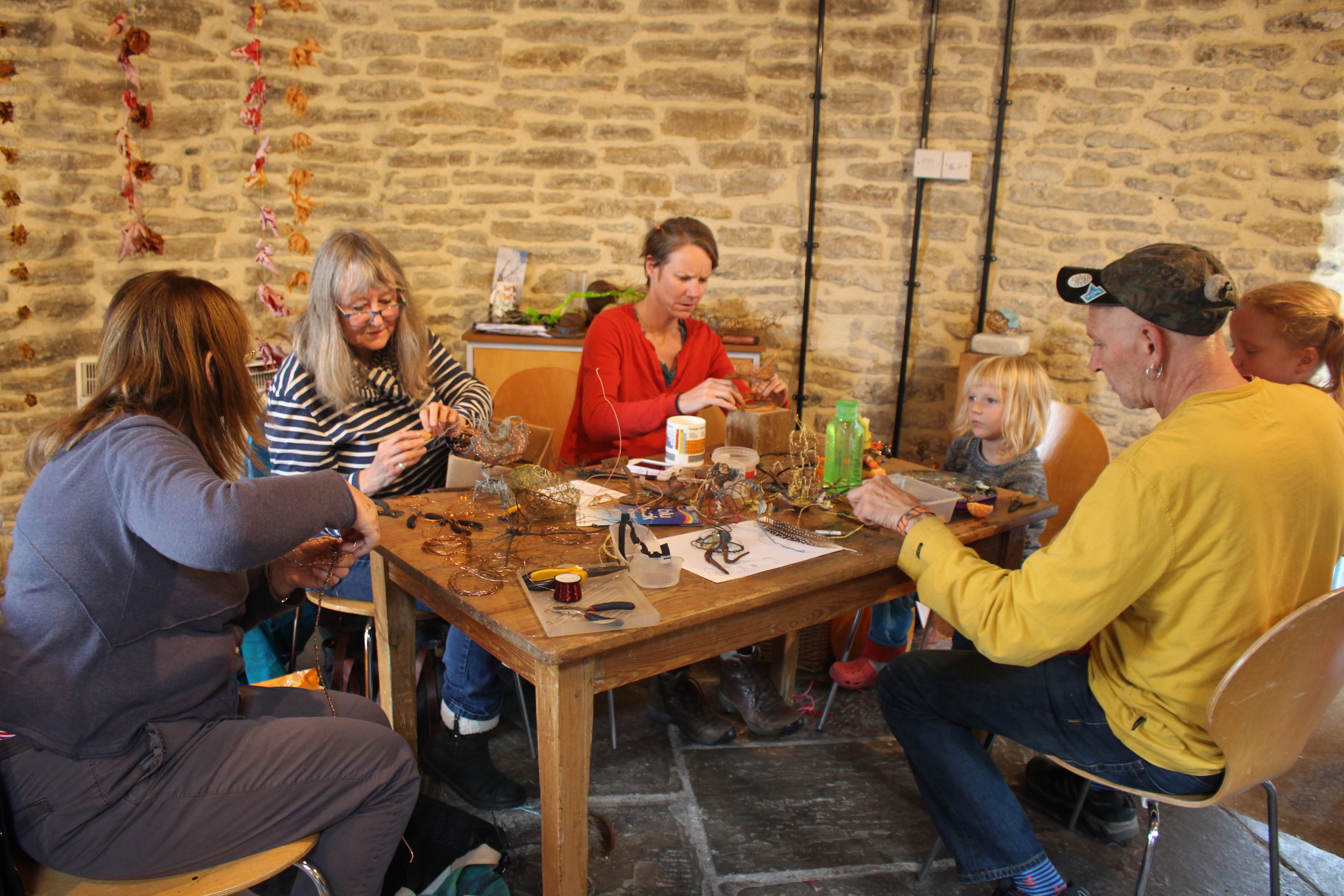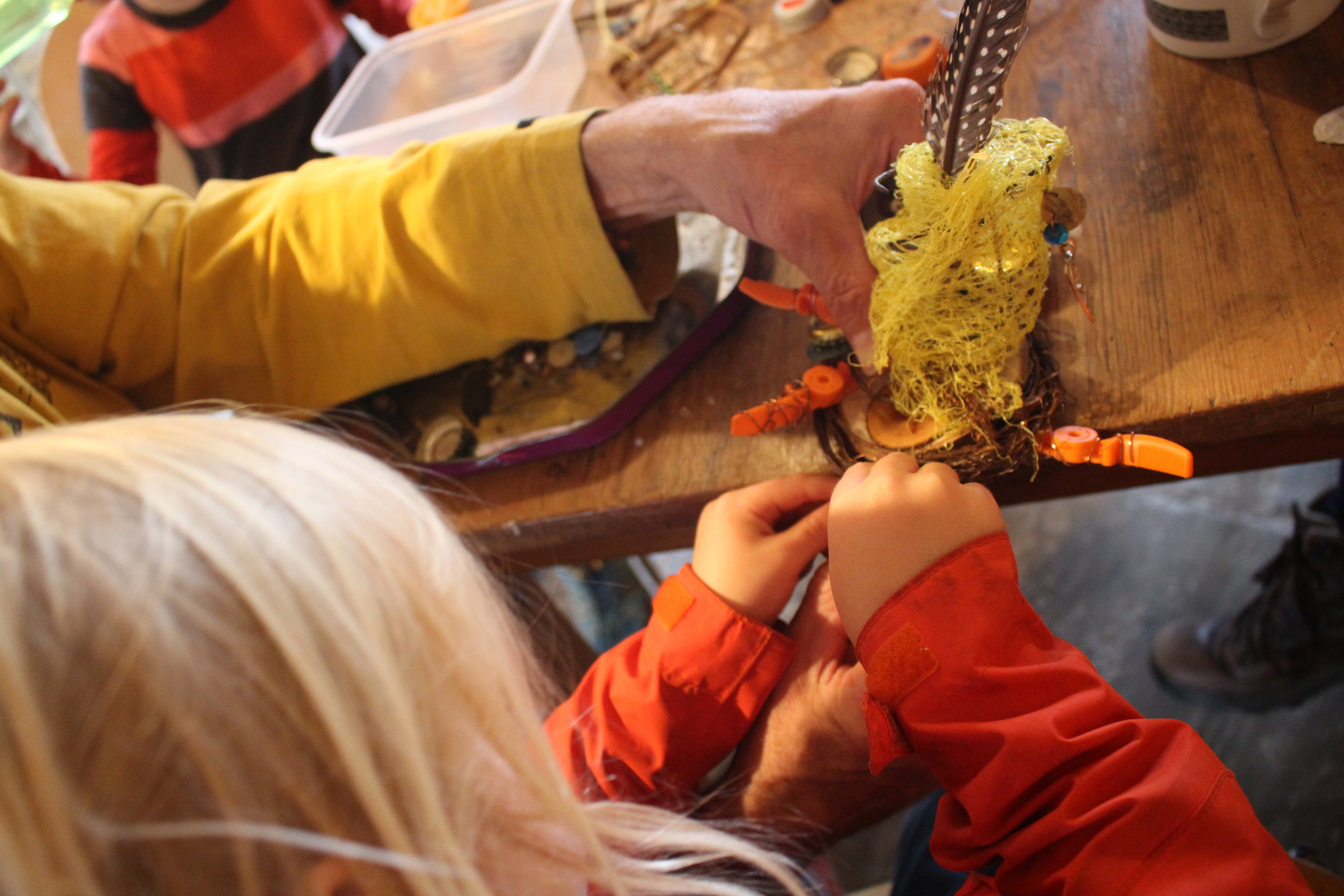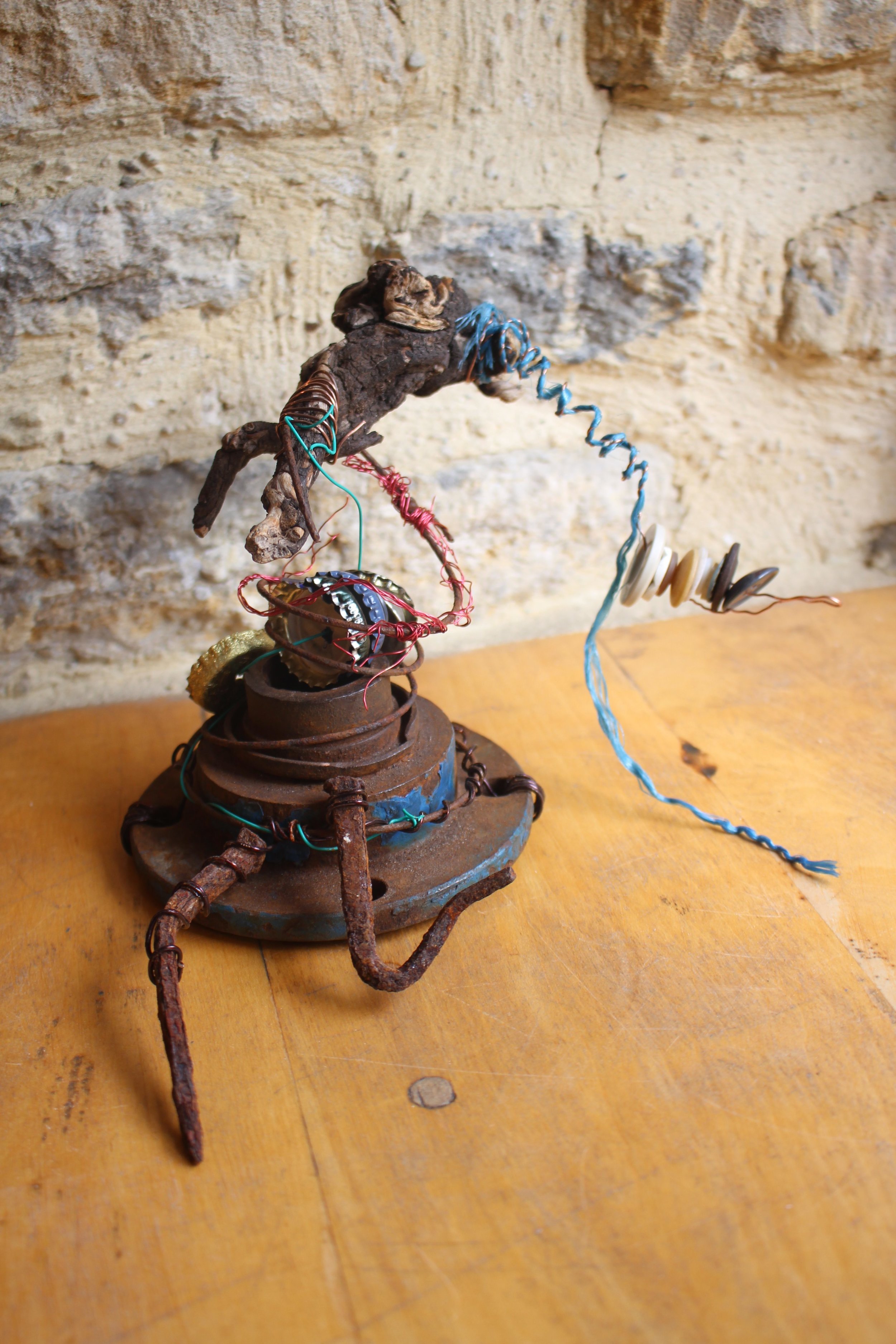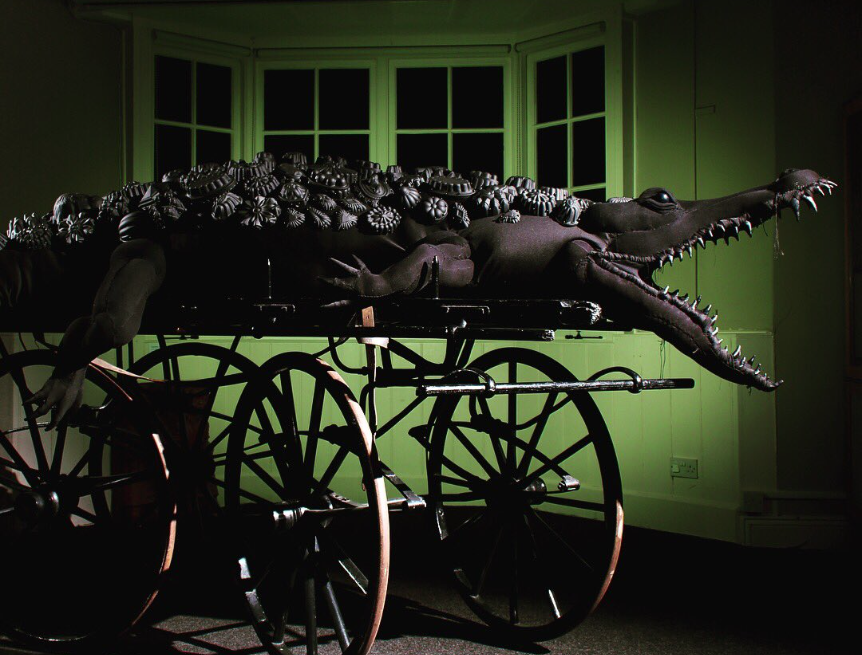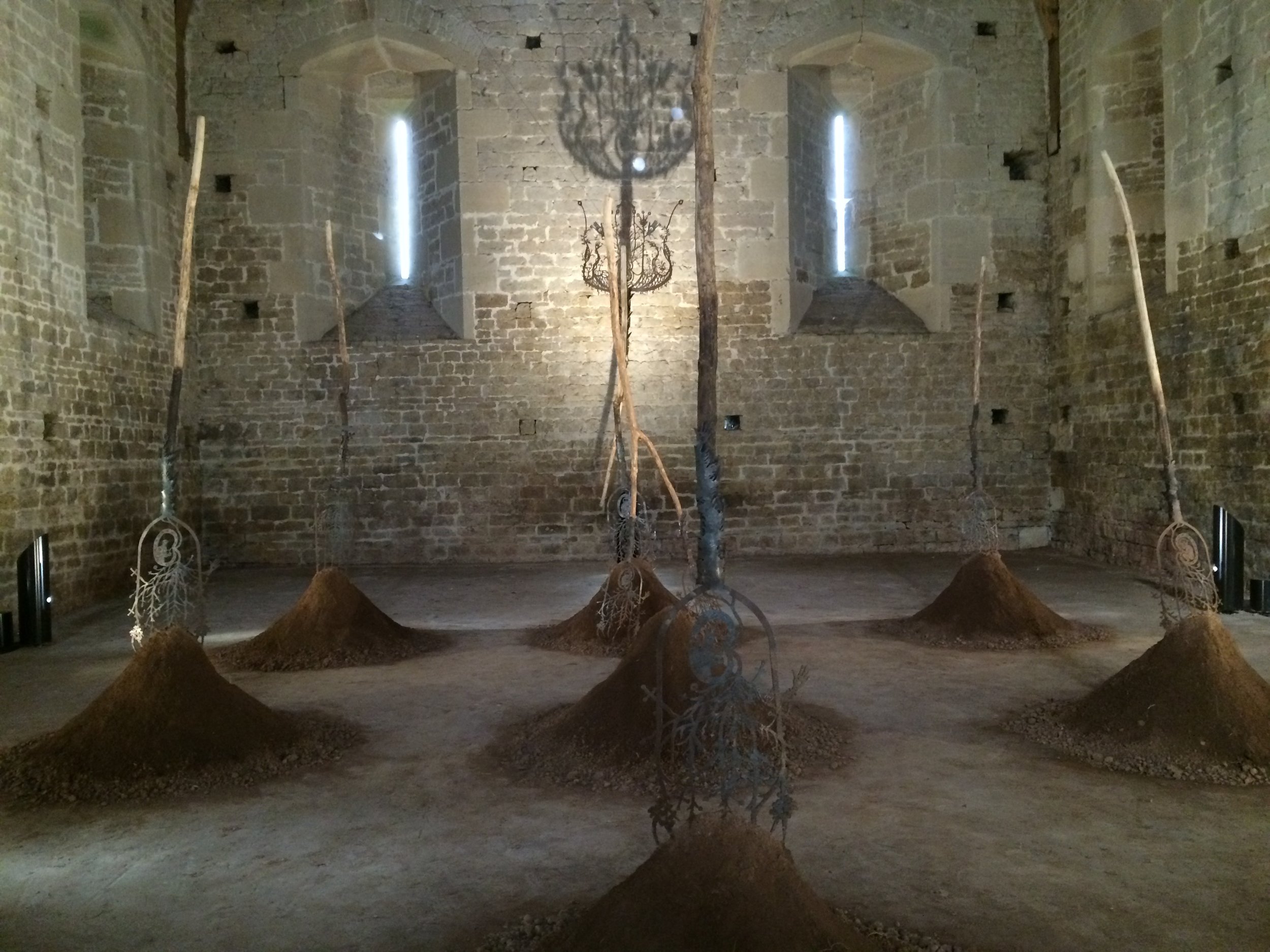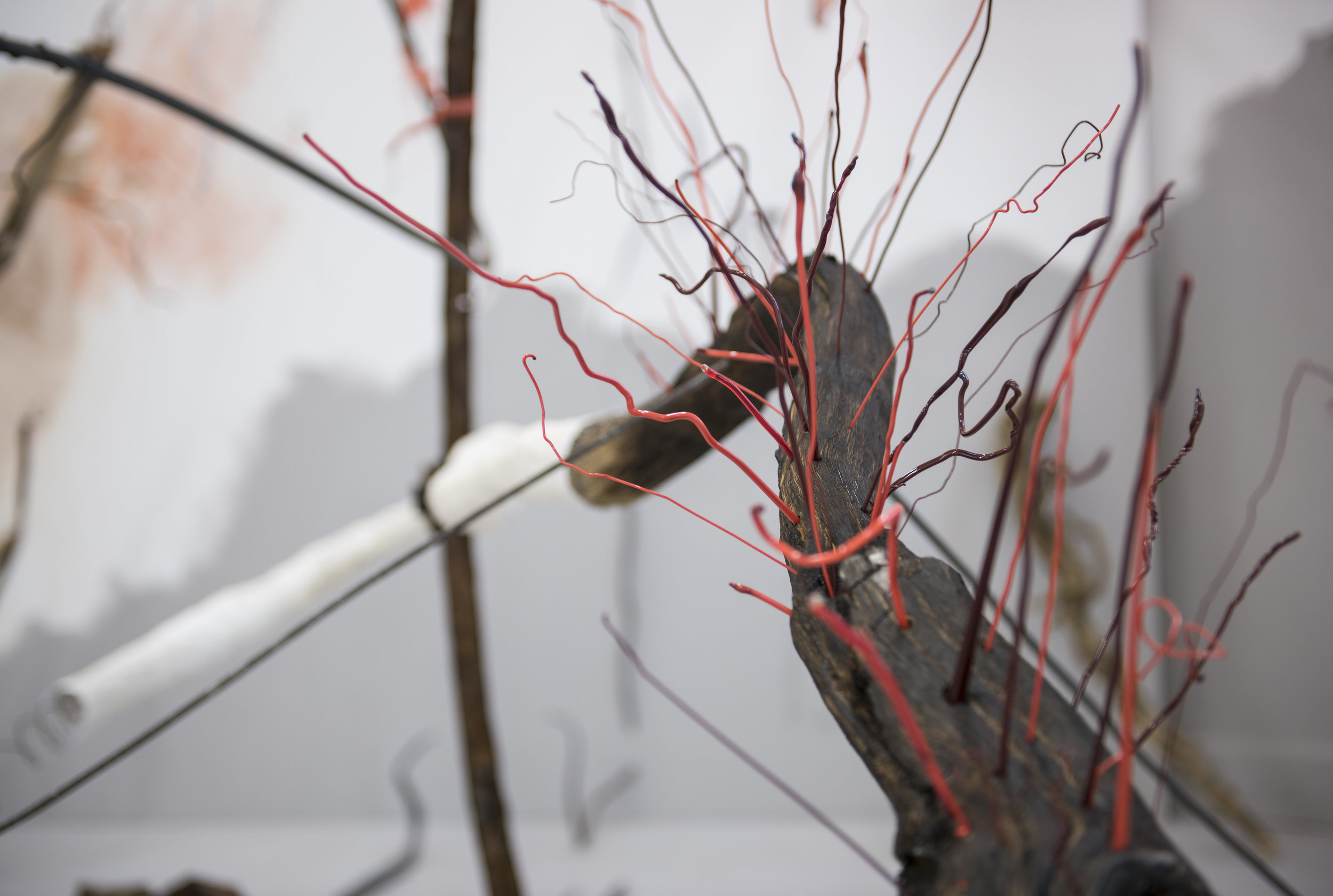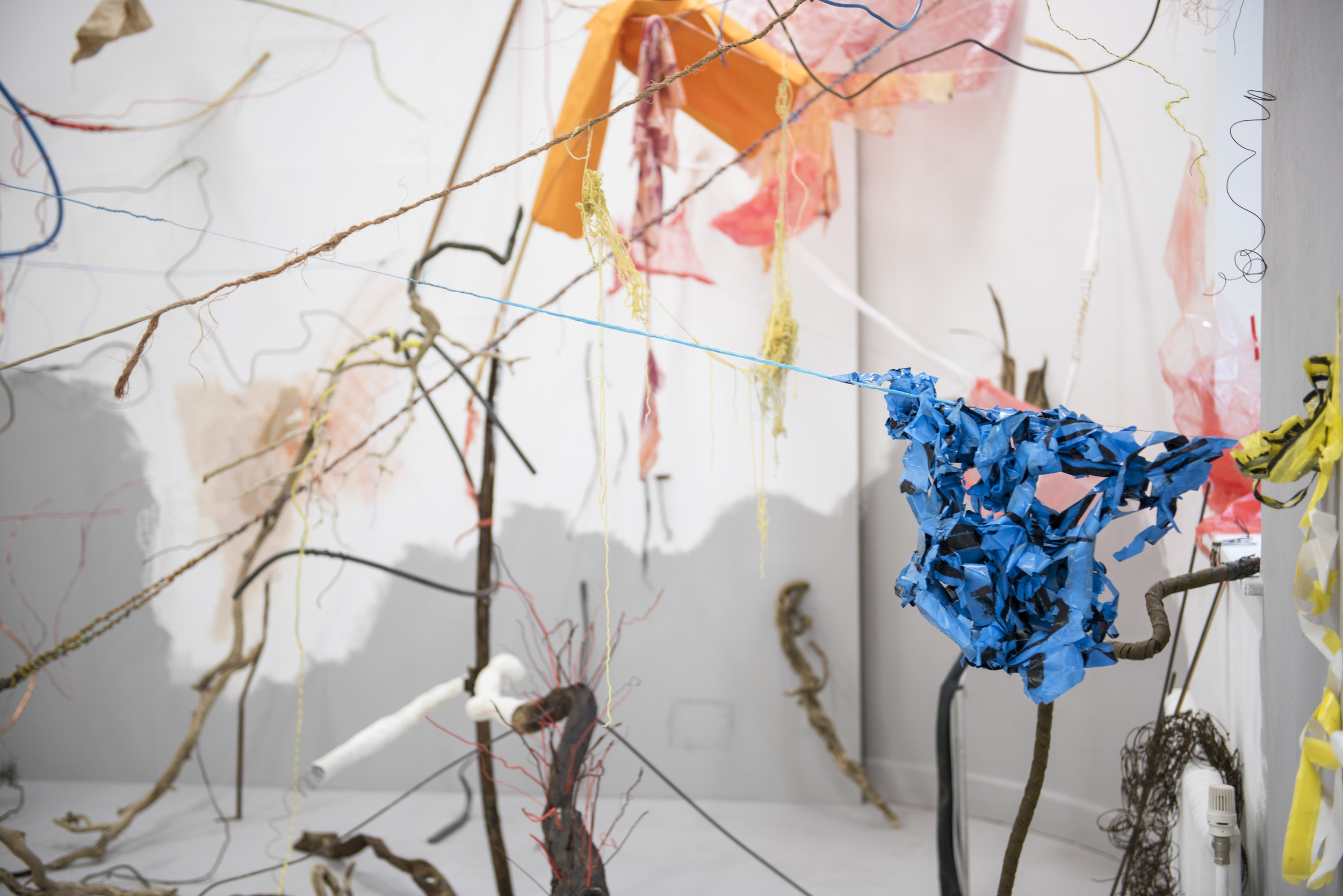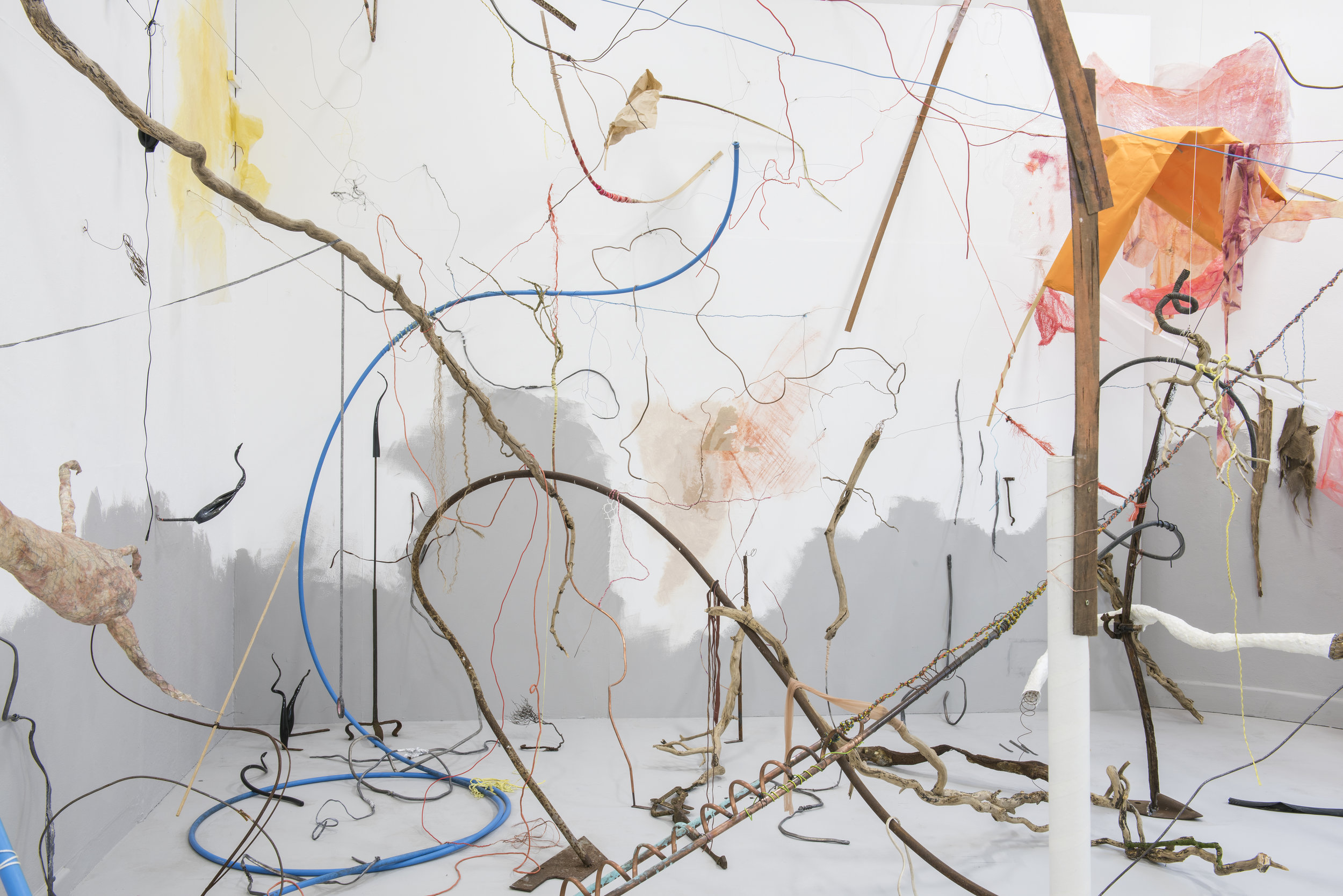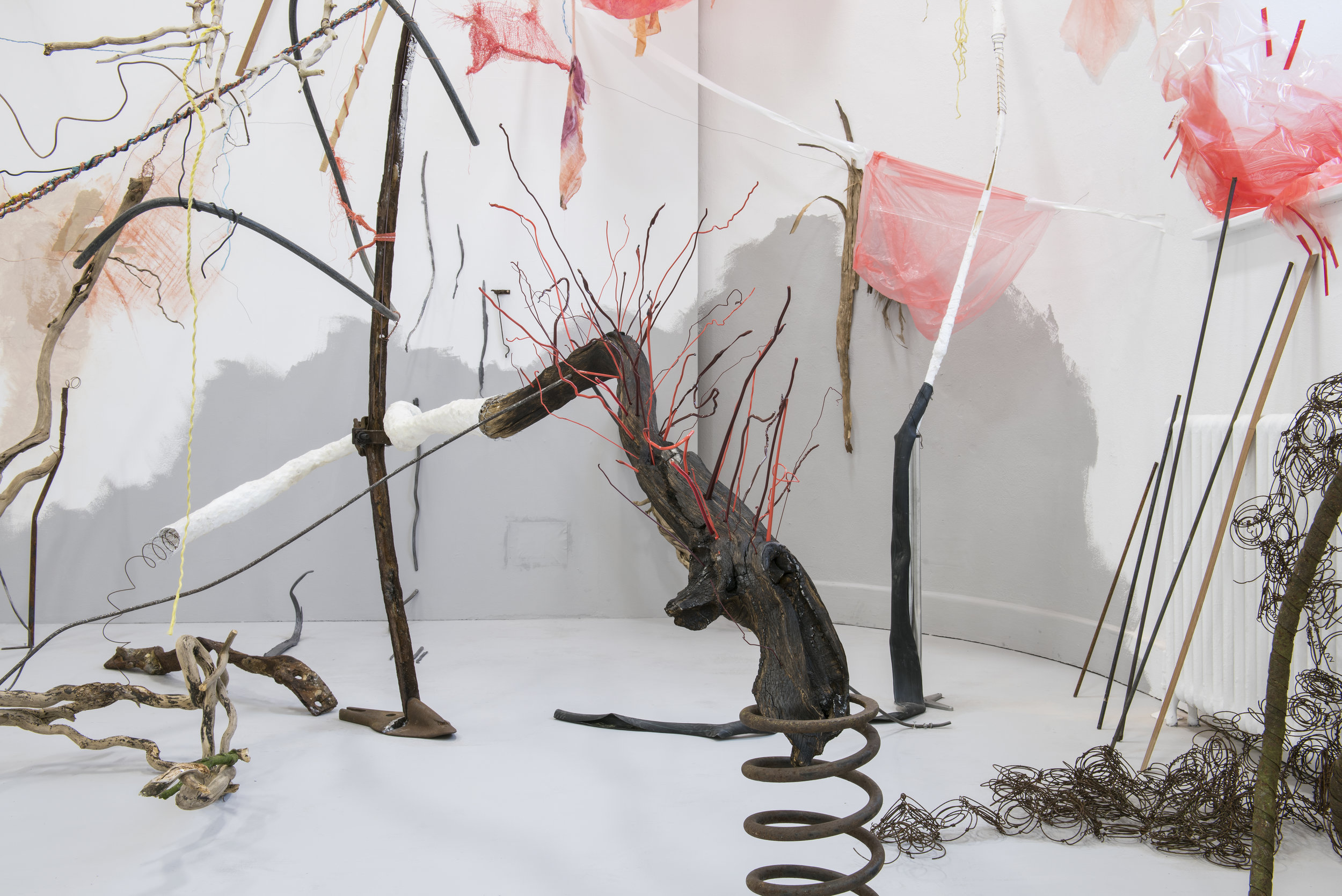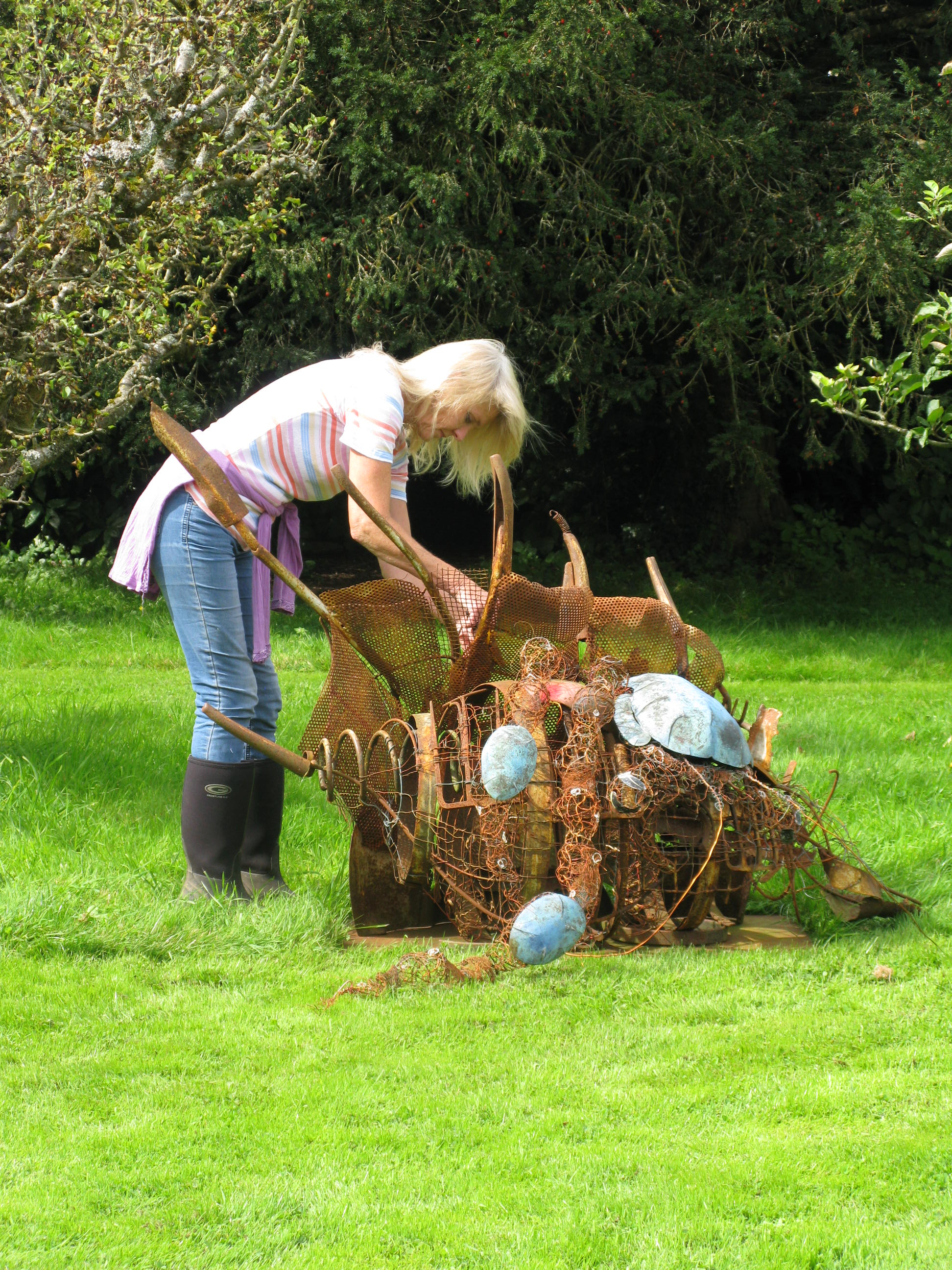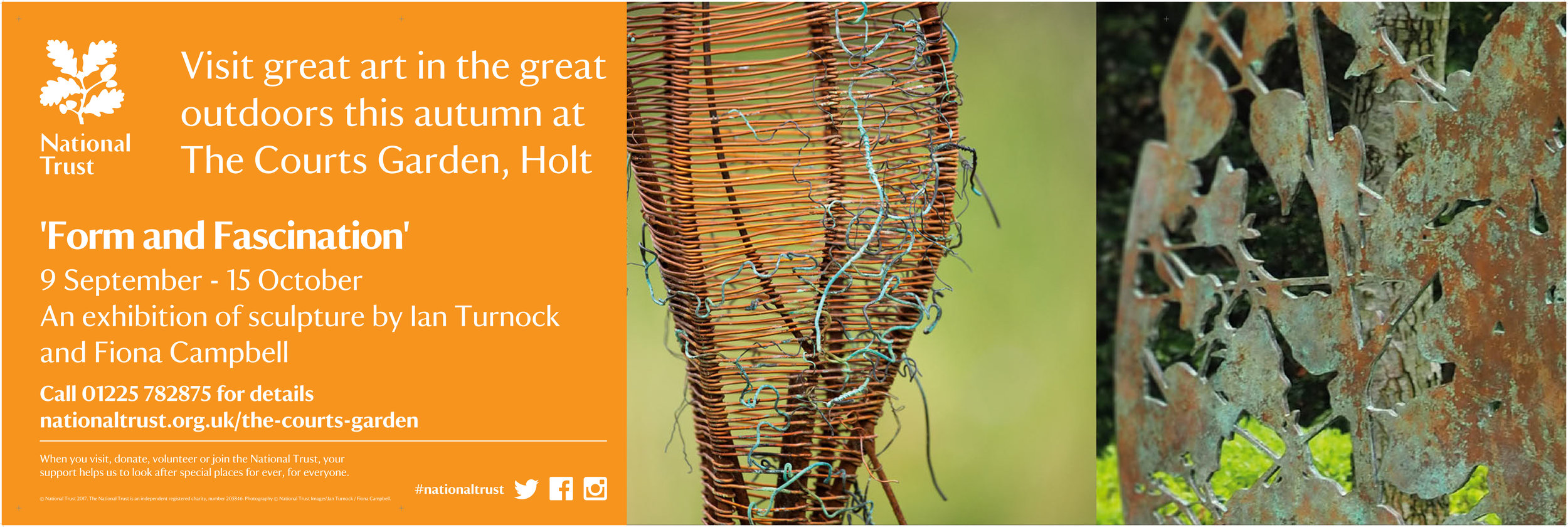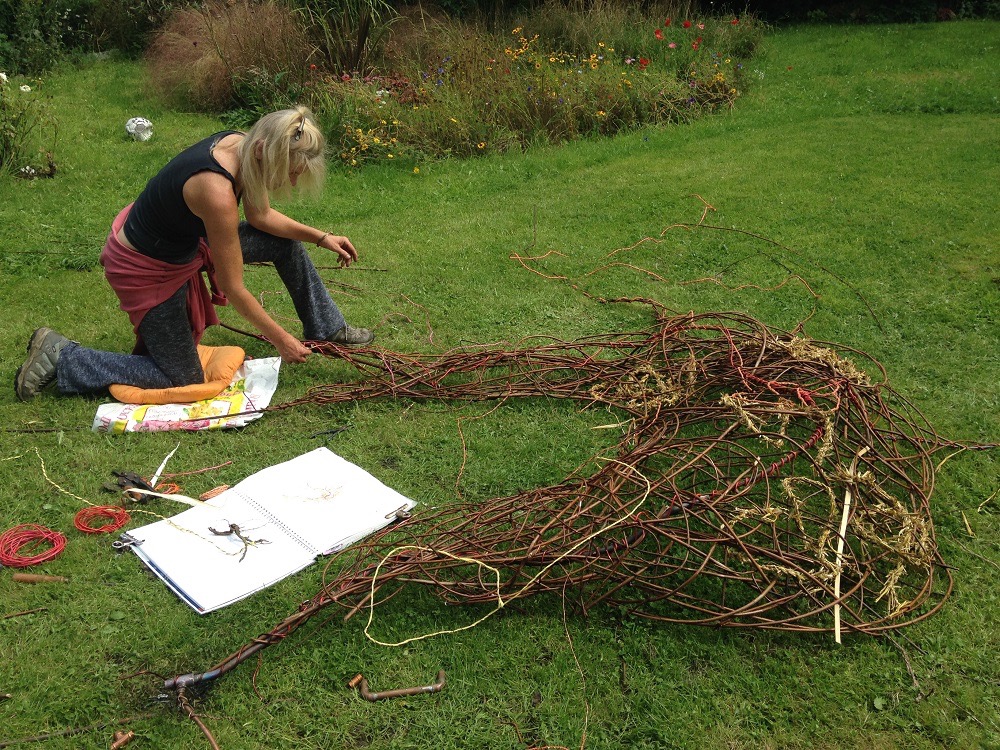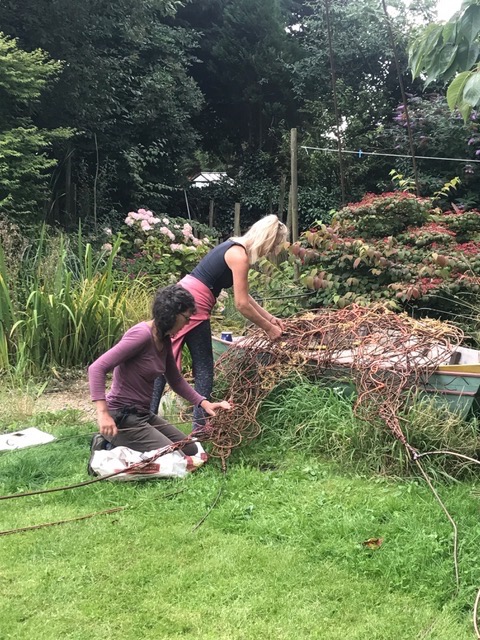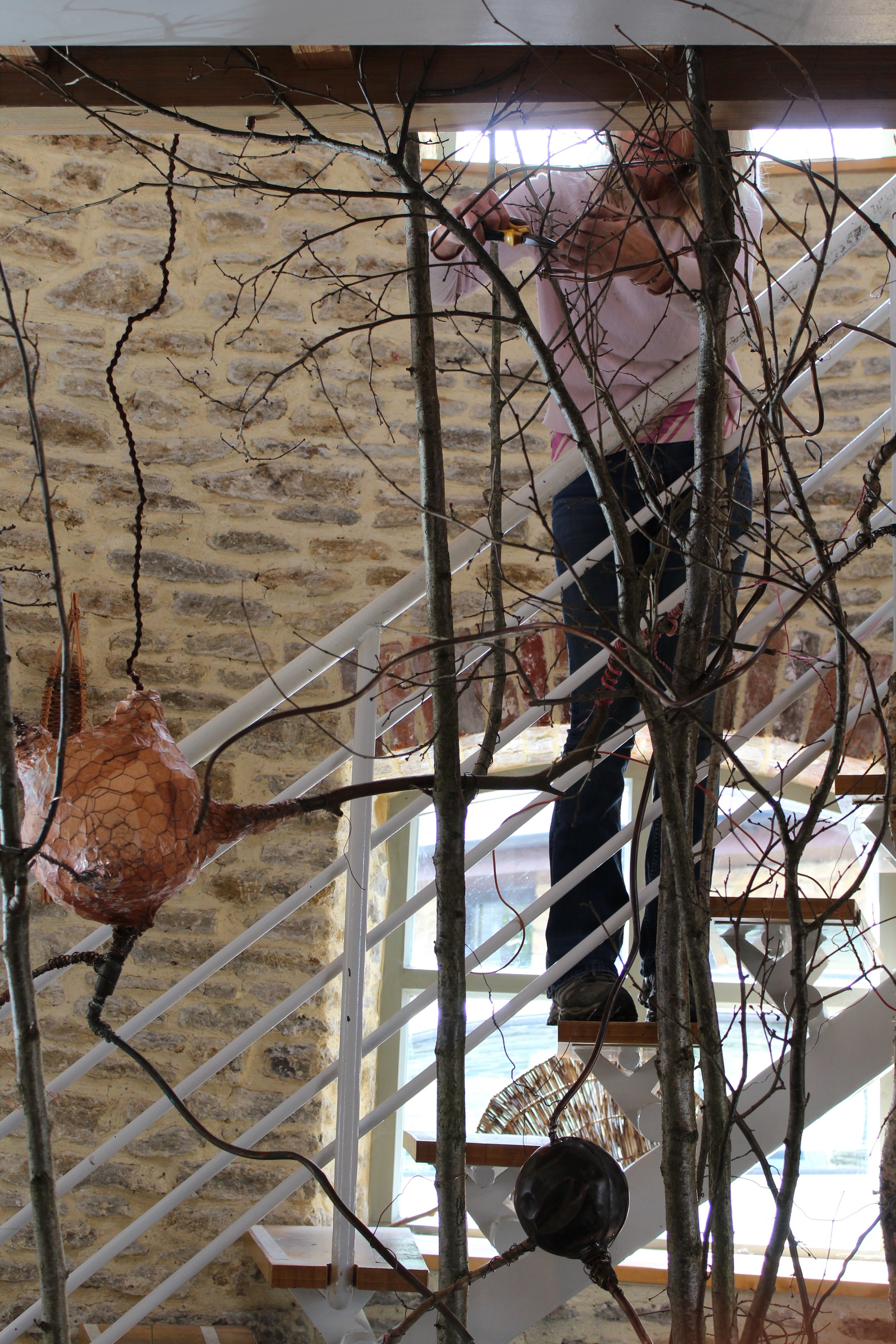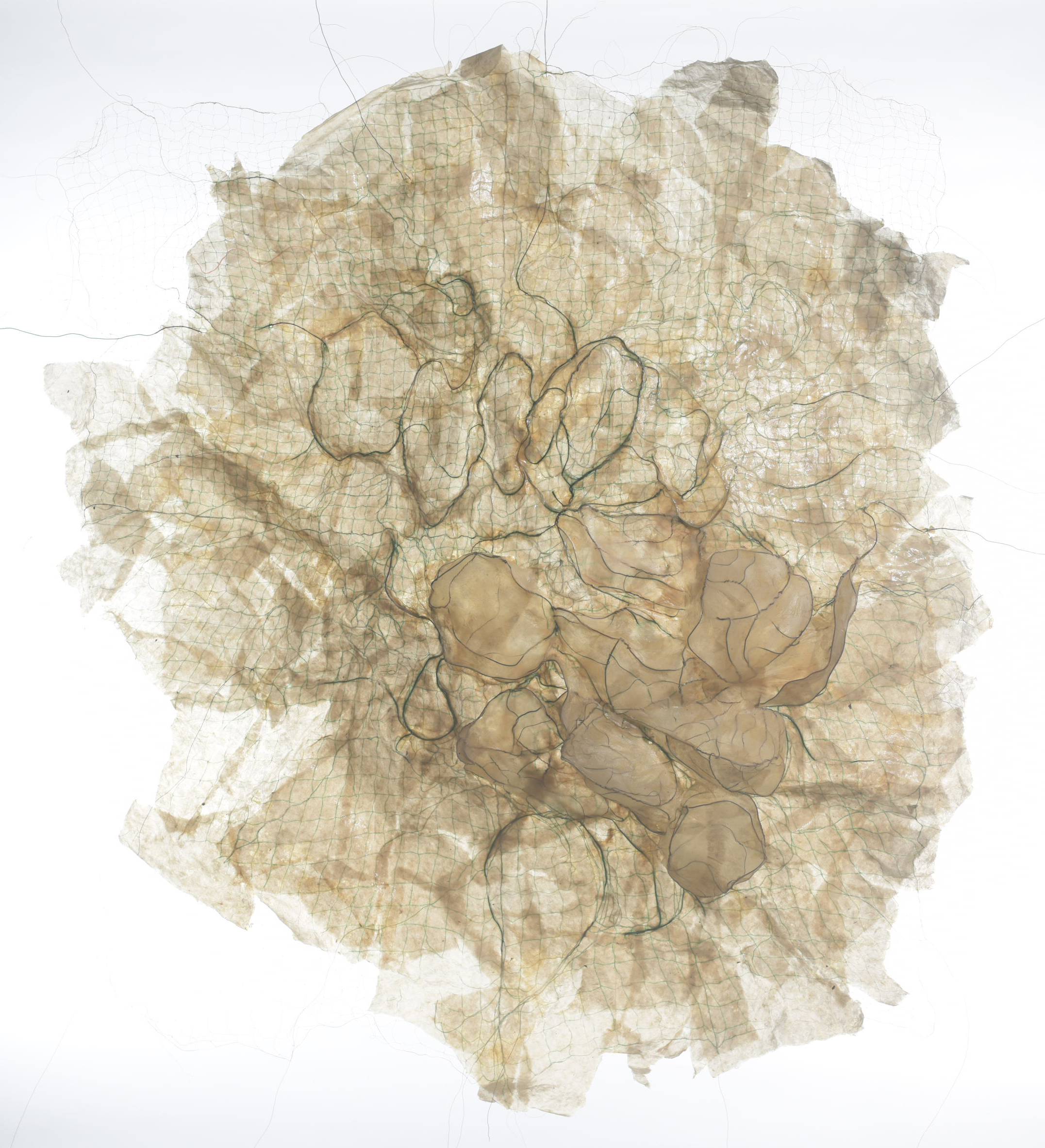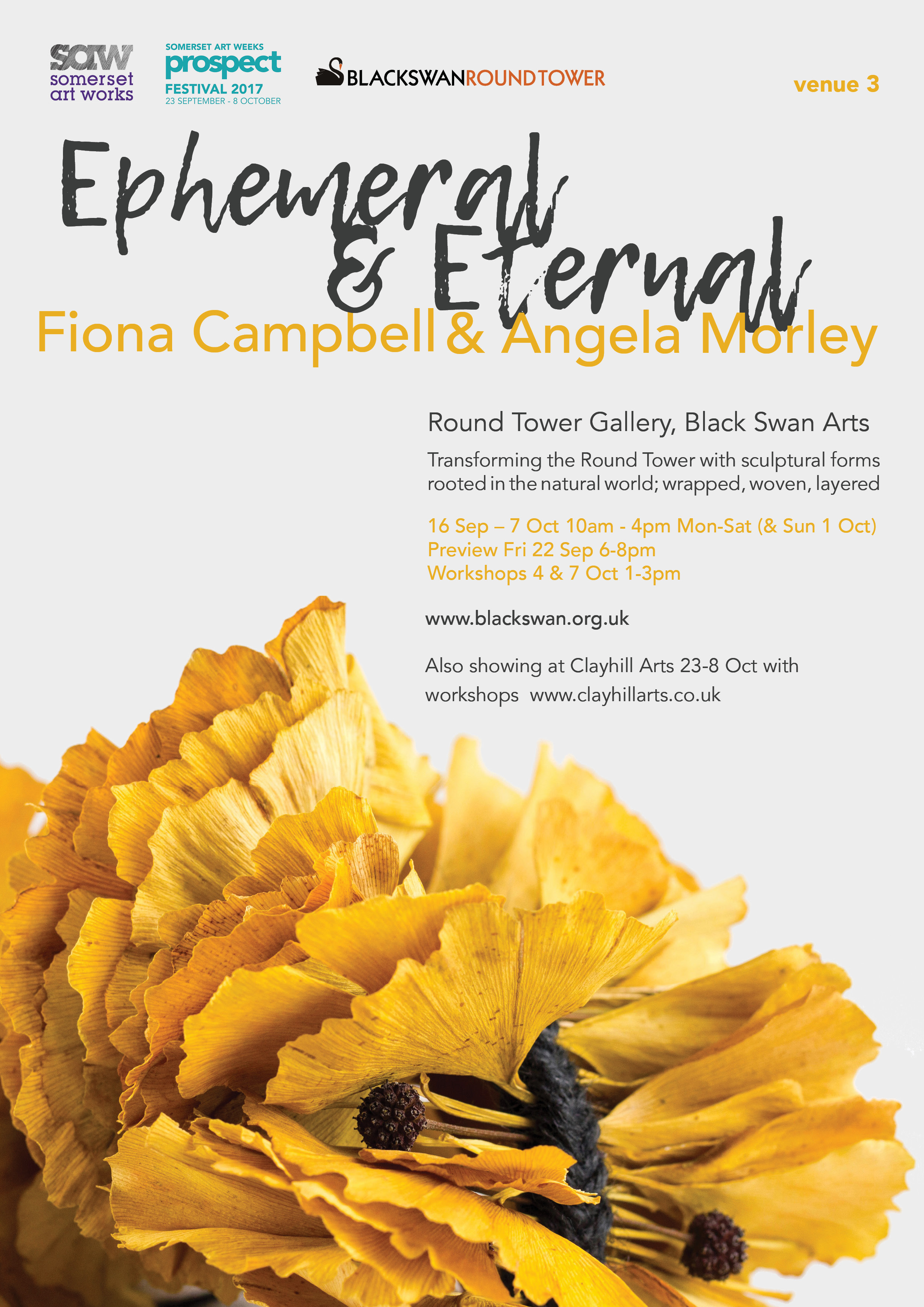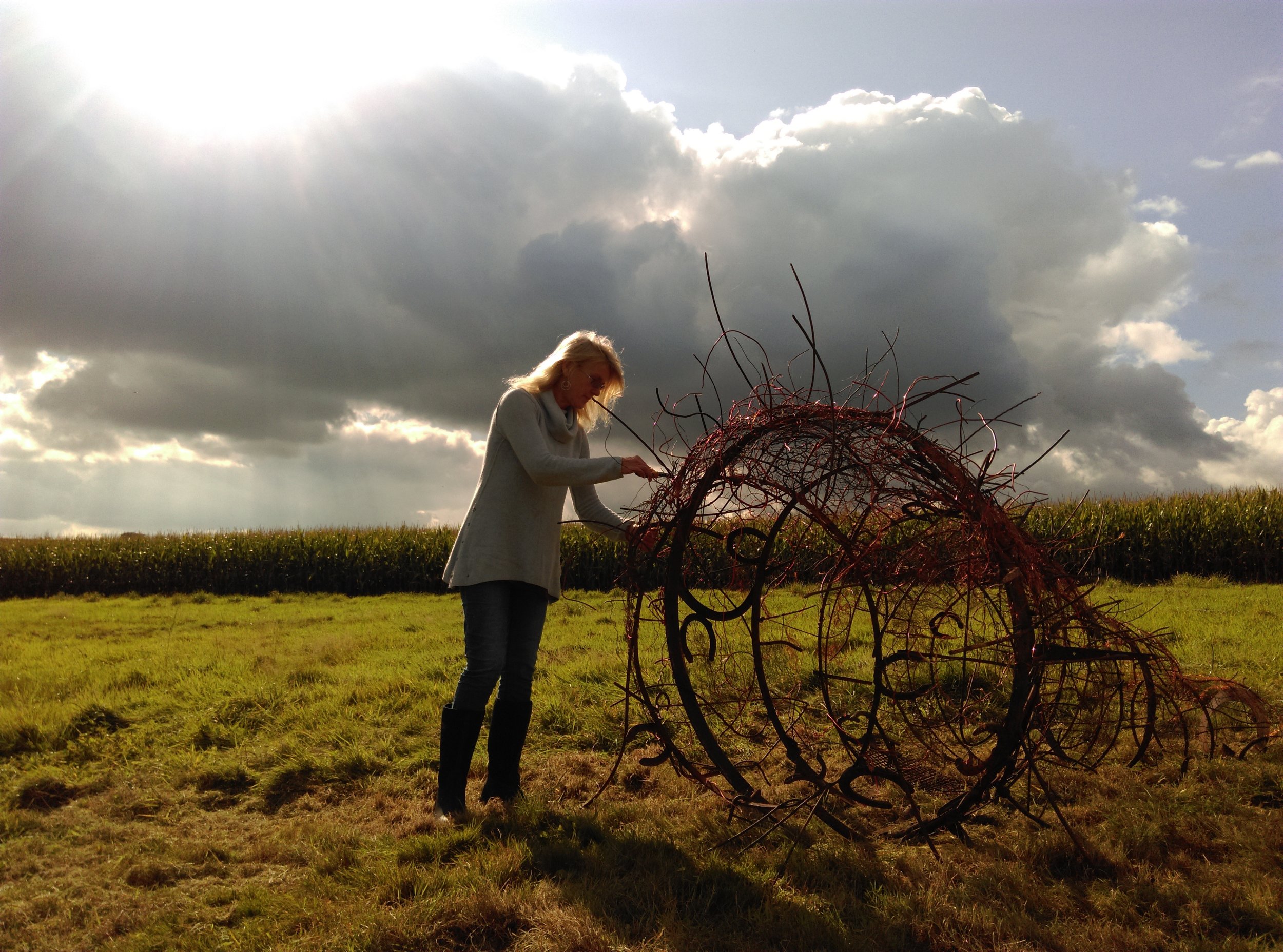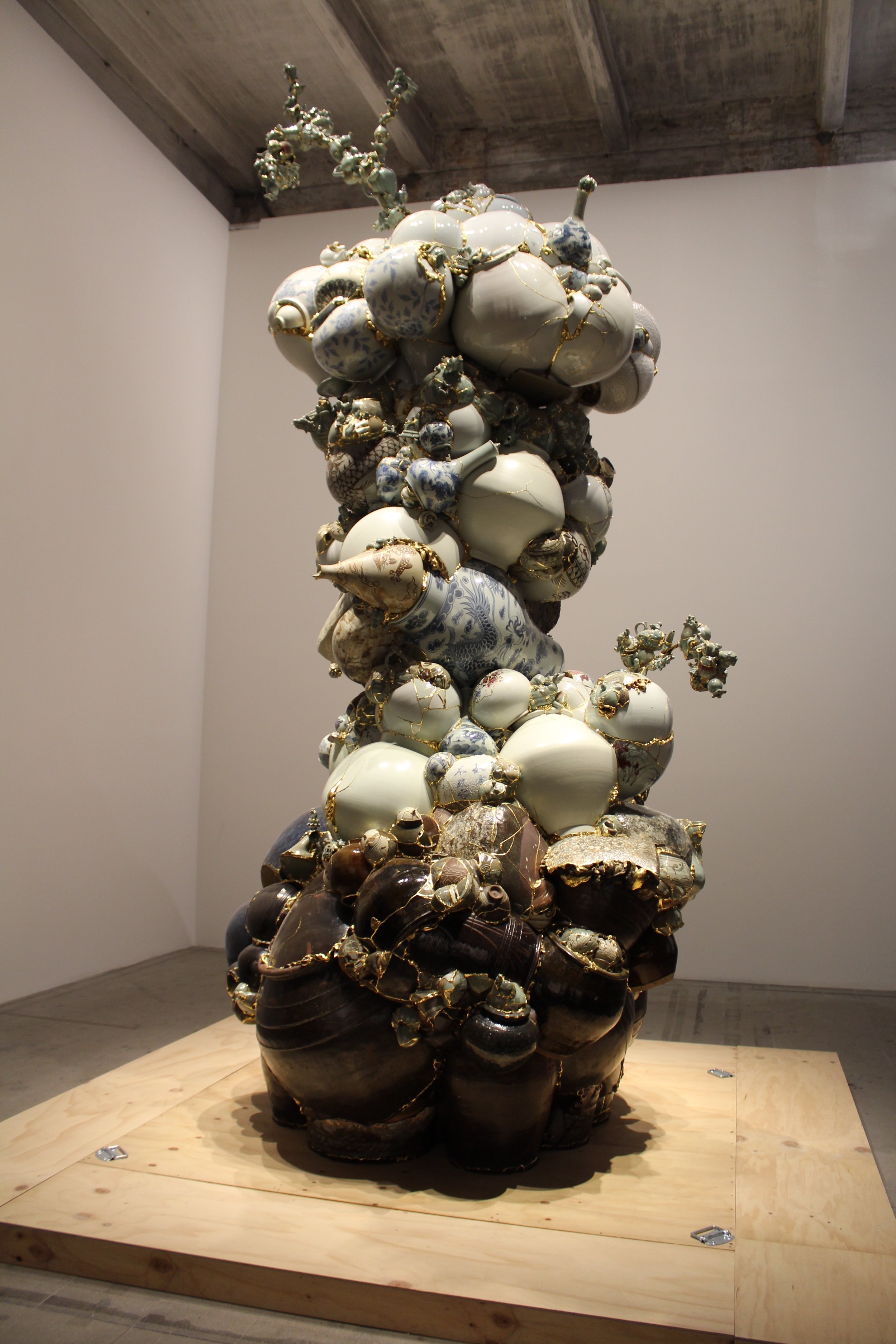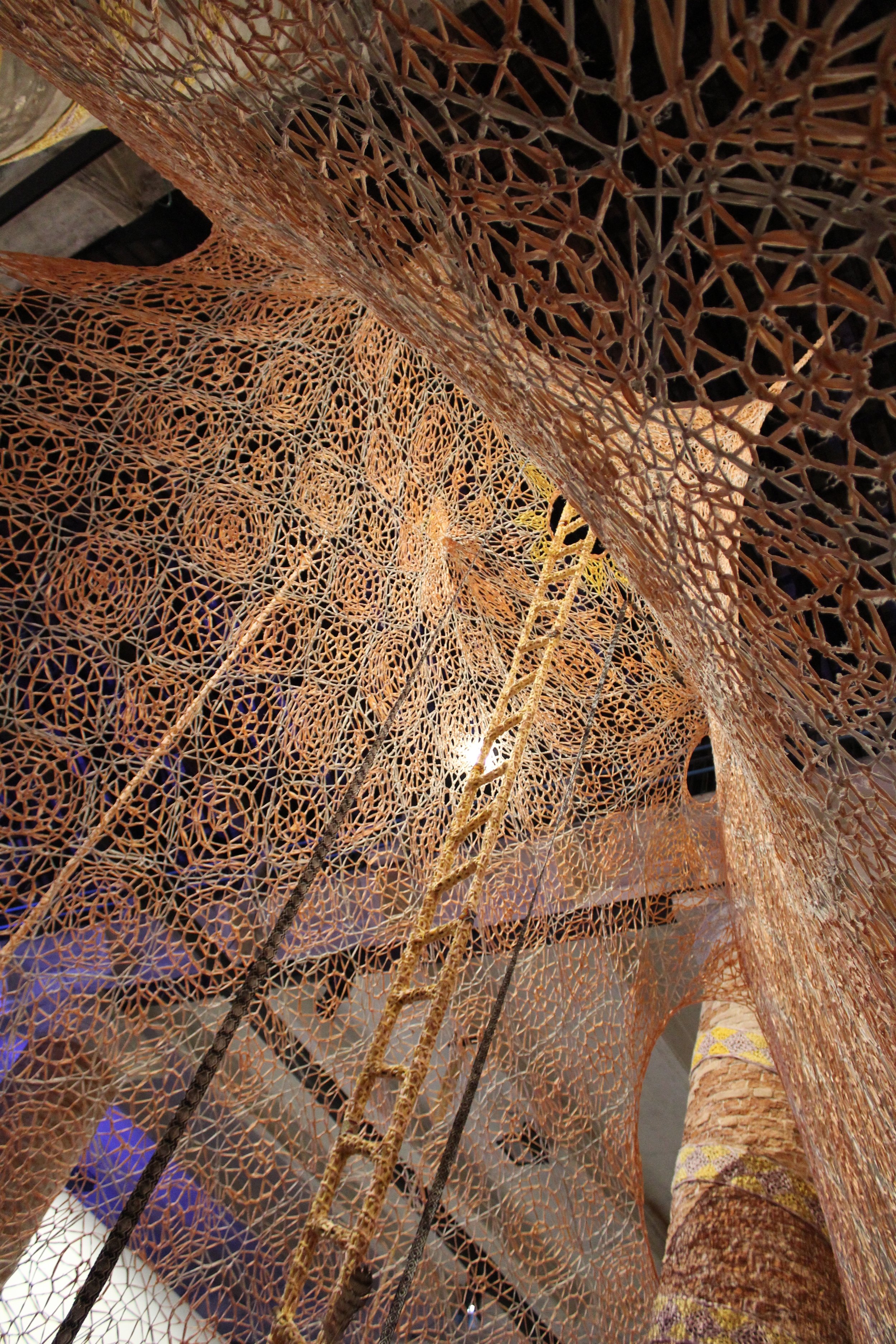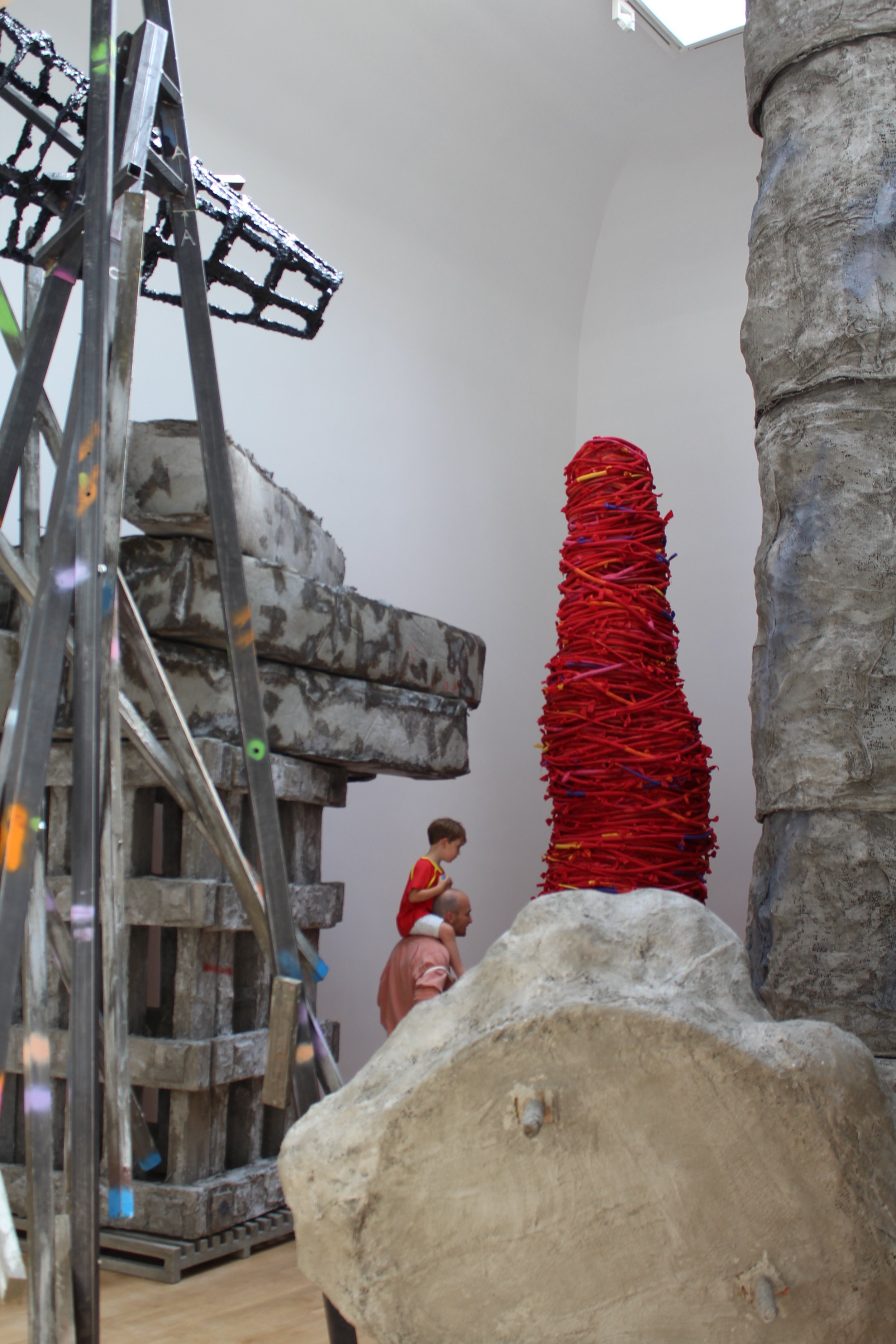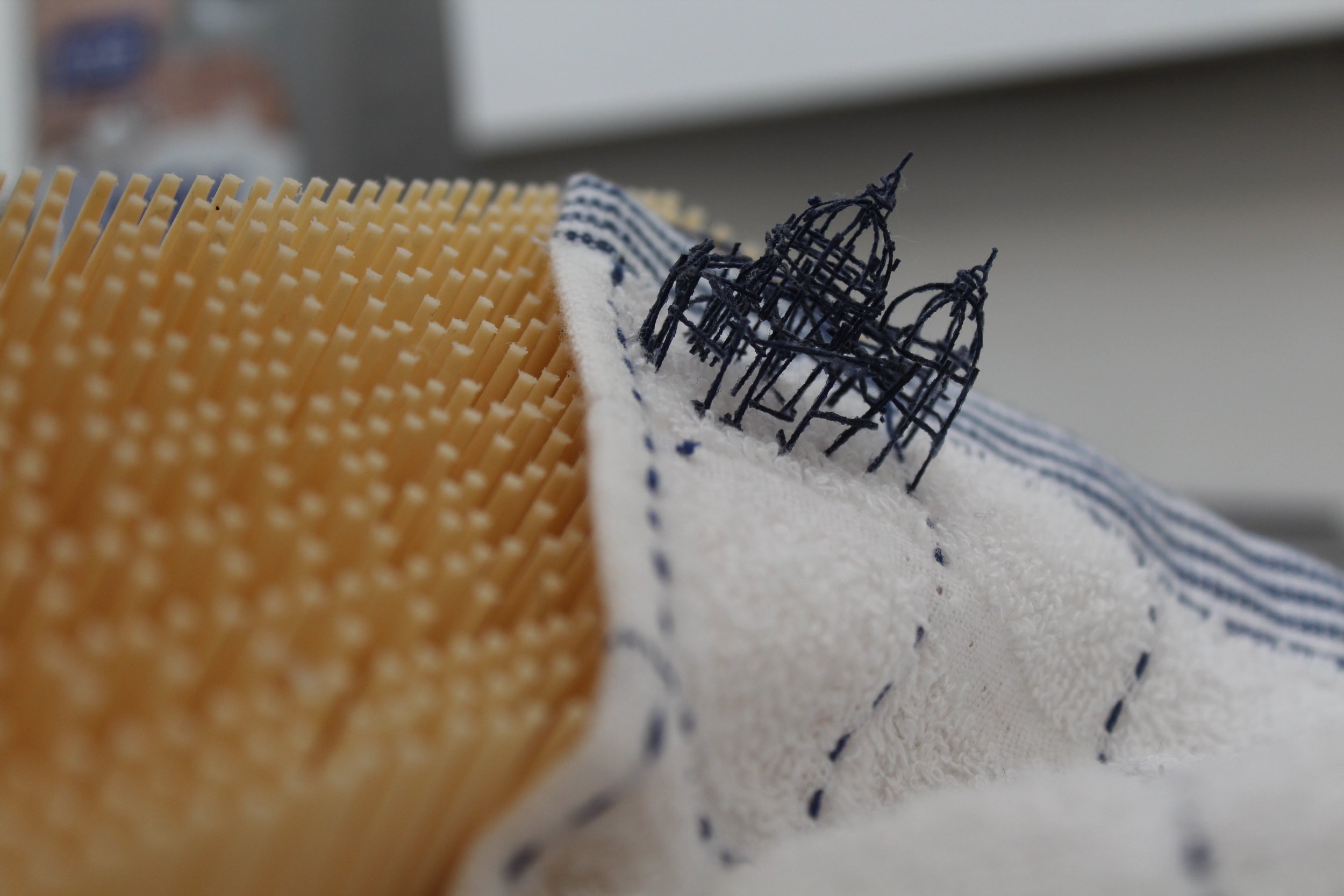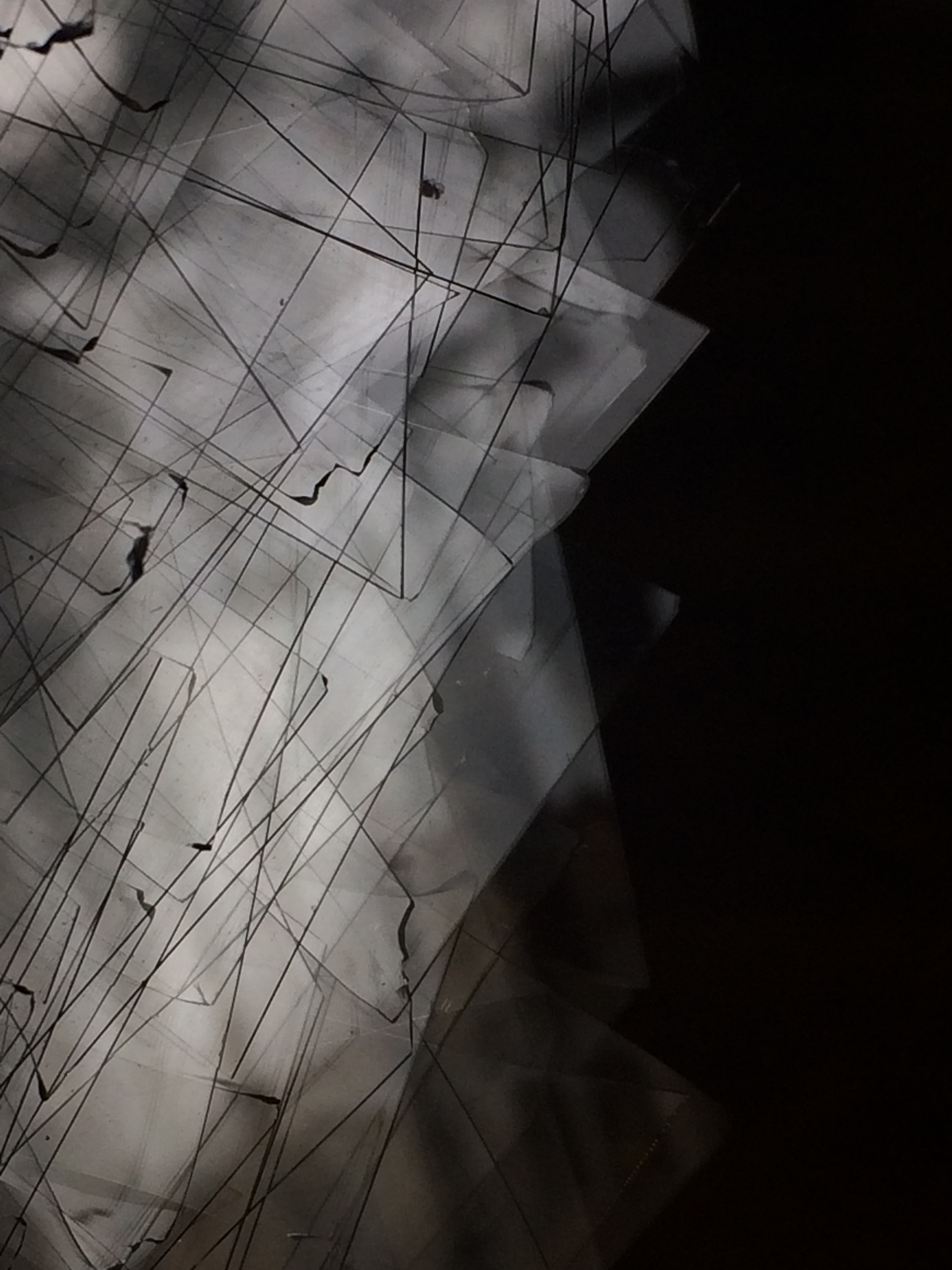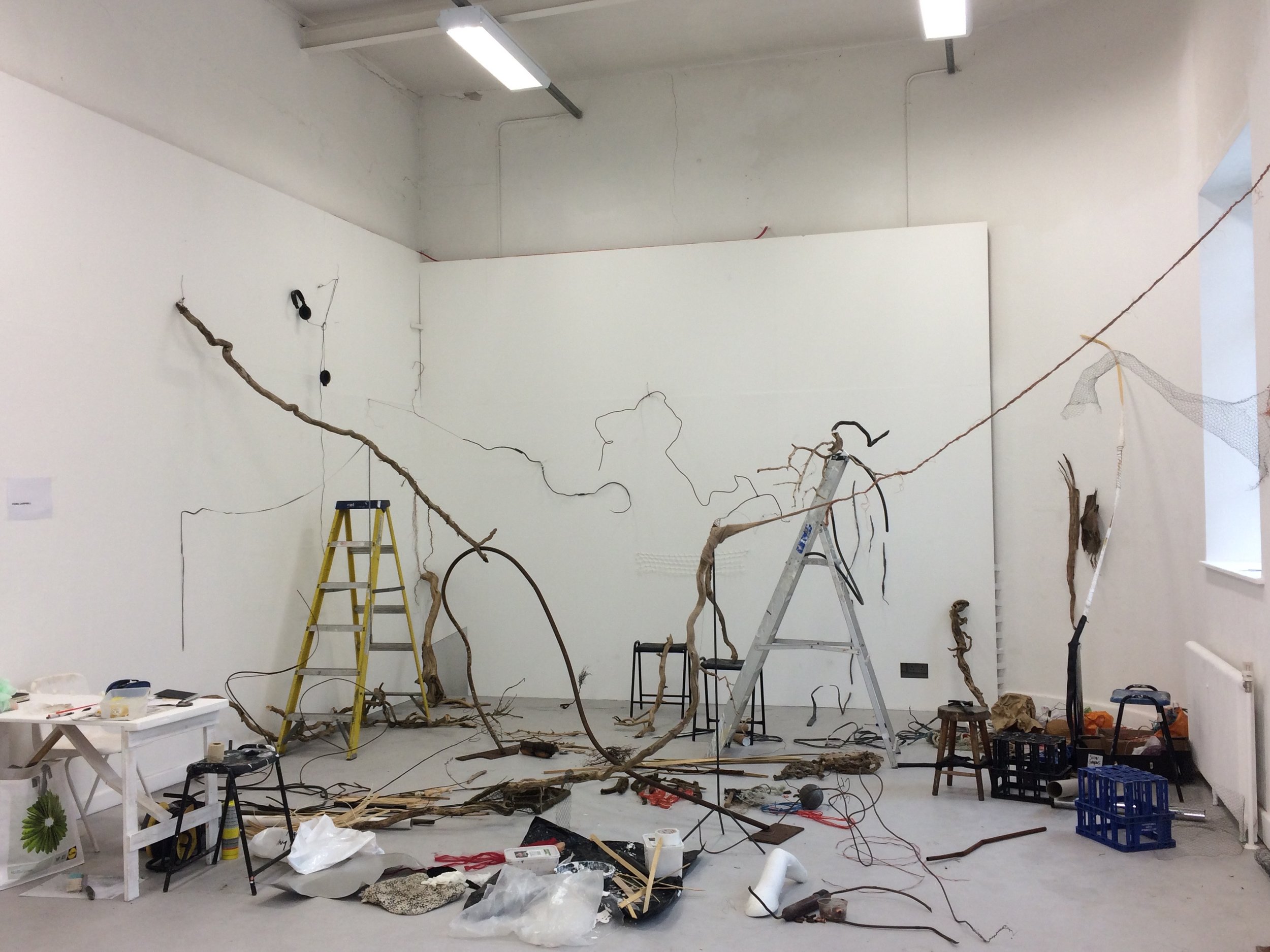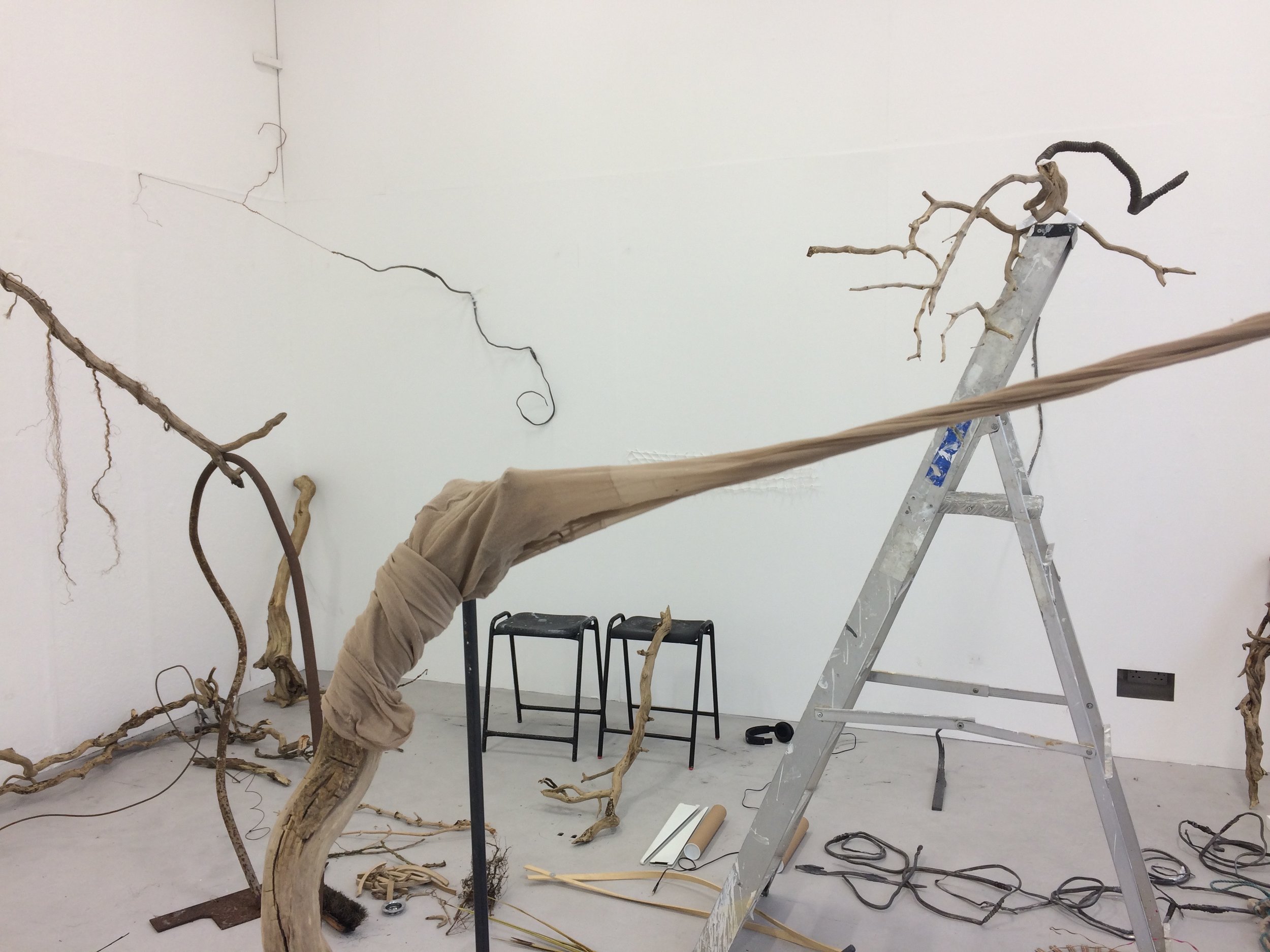I am relieved that the research-based module 4 of my MA is now over. I read alot of books - 'Materiality: Documents of Contemporay Art' is a brilliant eye-opener to concepts on matter and process. I now have a fairly clear run until September to work through ideas and create for my final MA show. I have been working outside for the first time since last summer in the February sunshine. Though cold, it has been wonderful to spread out and get on with new work.
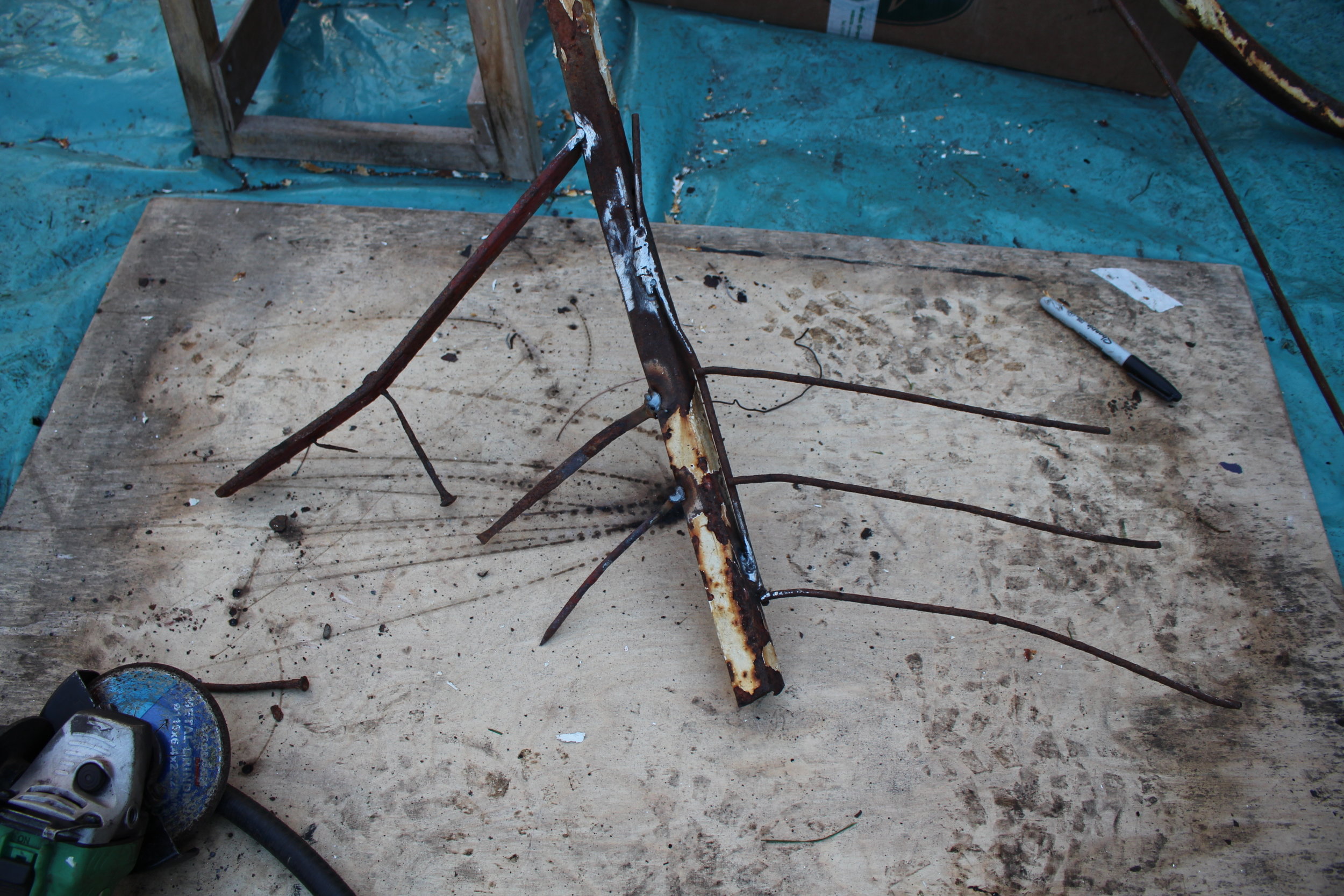
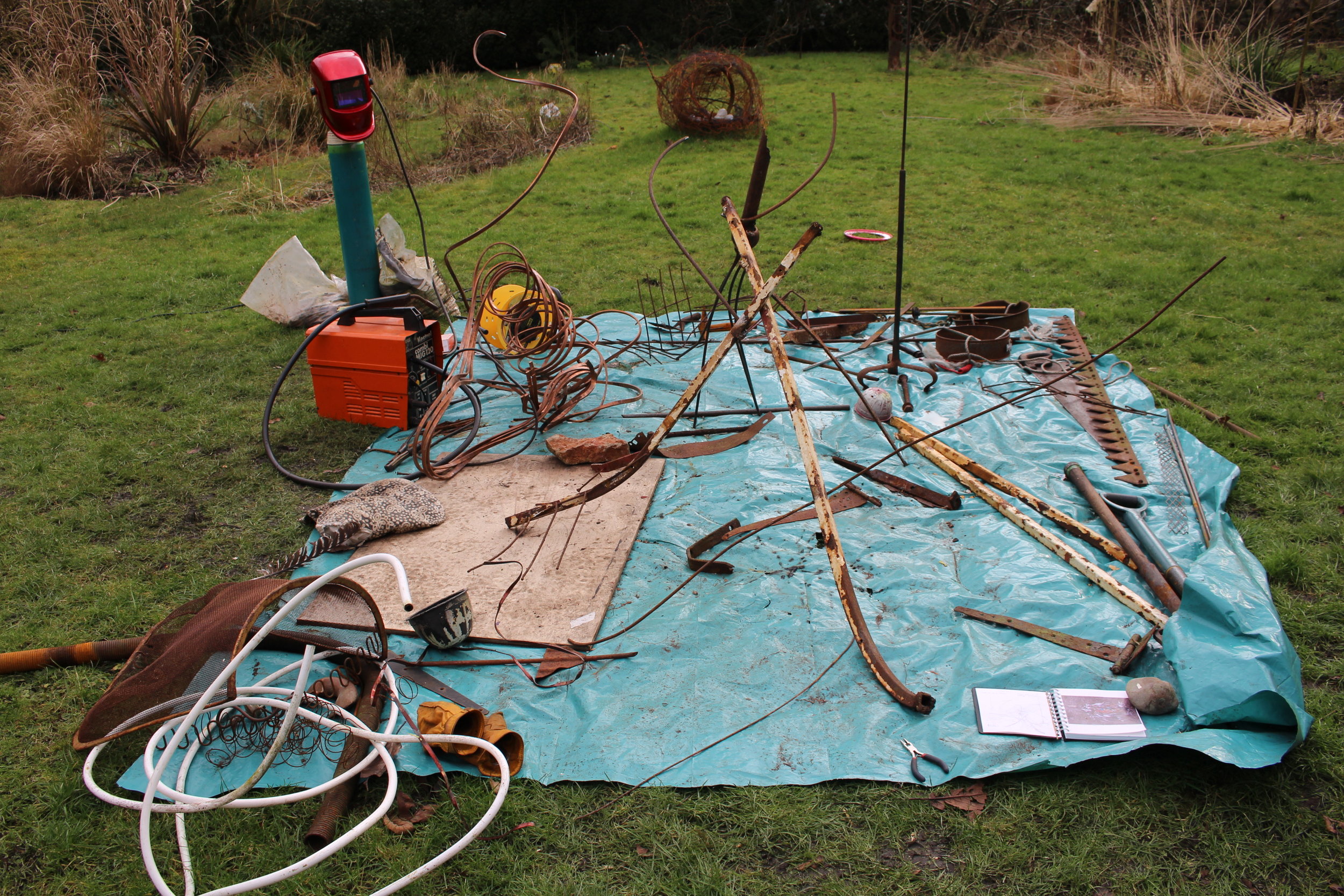
I have become fixated by the plight of sea creatures, dying in large numbers from trash heap gyres in our oceans. I am particularly disturbed by images of Albatross chicks taken by Chris Jordan, a photography initiative at Midway, USA. Their stomachs get bloated full of plastic objects - sharp shards, lighters and bottle tops, fed by their parents mistaking the floating objects for morsels of fish. Their insides reveal a microscopic view of our trash. My new piece is a response to this terrible reality, to be shown in a residency at Walcot Chapel, Bath, later this month (12-18 Feb). I am linking the myth of the albatross in Coleridge’s Rime of the Ancient Mariner (‘instead of a cross, the albatross’) with ideas of the crucifixion, using found objects including old steel nails, rope and plastic.
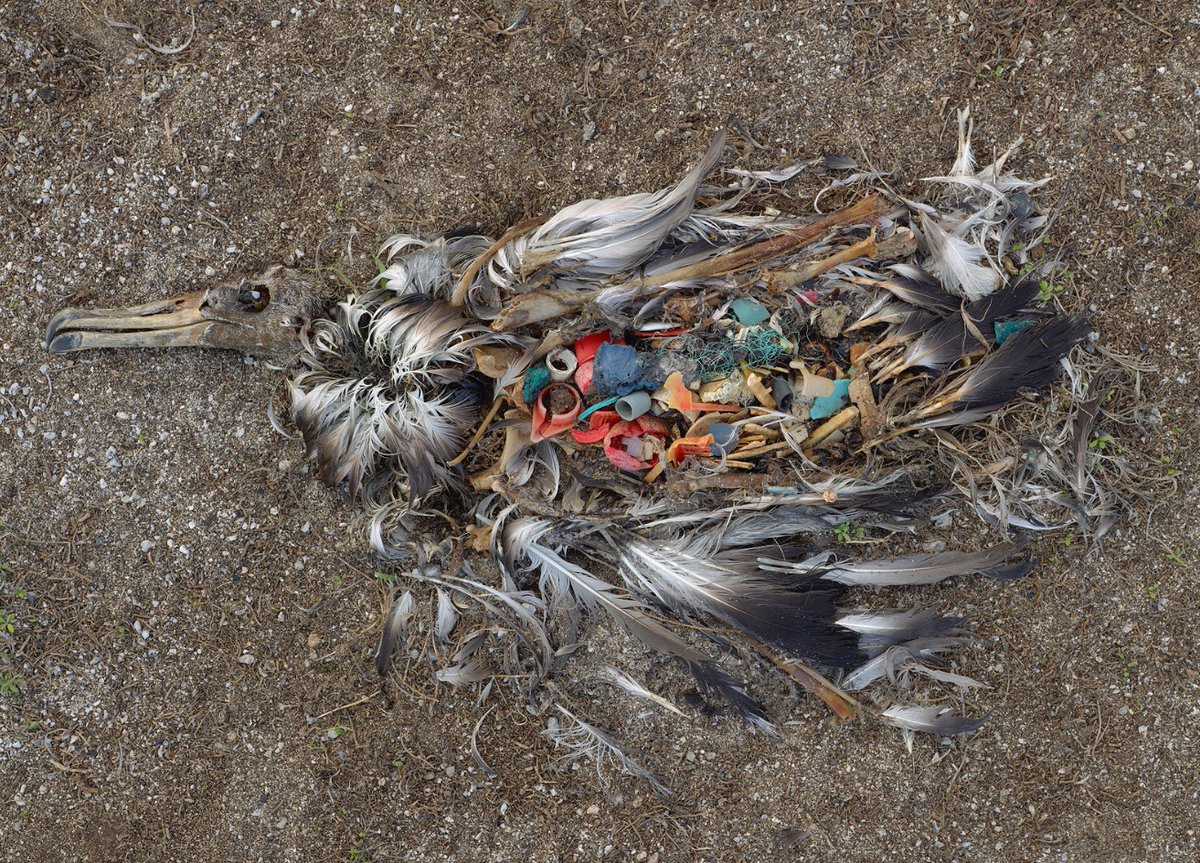
I had to make a 2 minute video of an artist between 1900-49 to present as part of Dexter Dalwood seminars at Bath Spa Uni. I decided to make one about Graham Sutherland's Green Tree Form: Interior of Woods. For a first film, it turned out ok, thanks to my son Jack for his technical help putting it together. Sutherland’s thorn series brought to mind the association of nails/thorns with the crucifixion for my new piece.
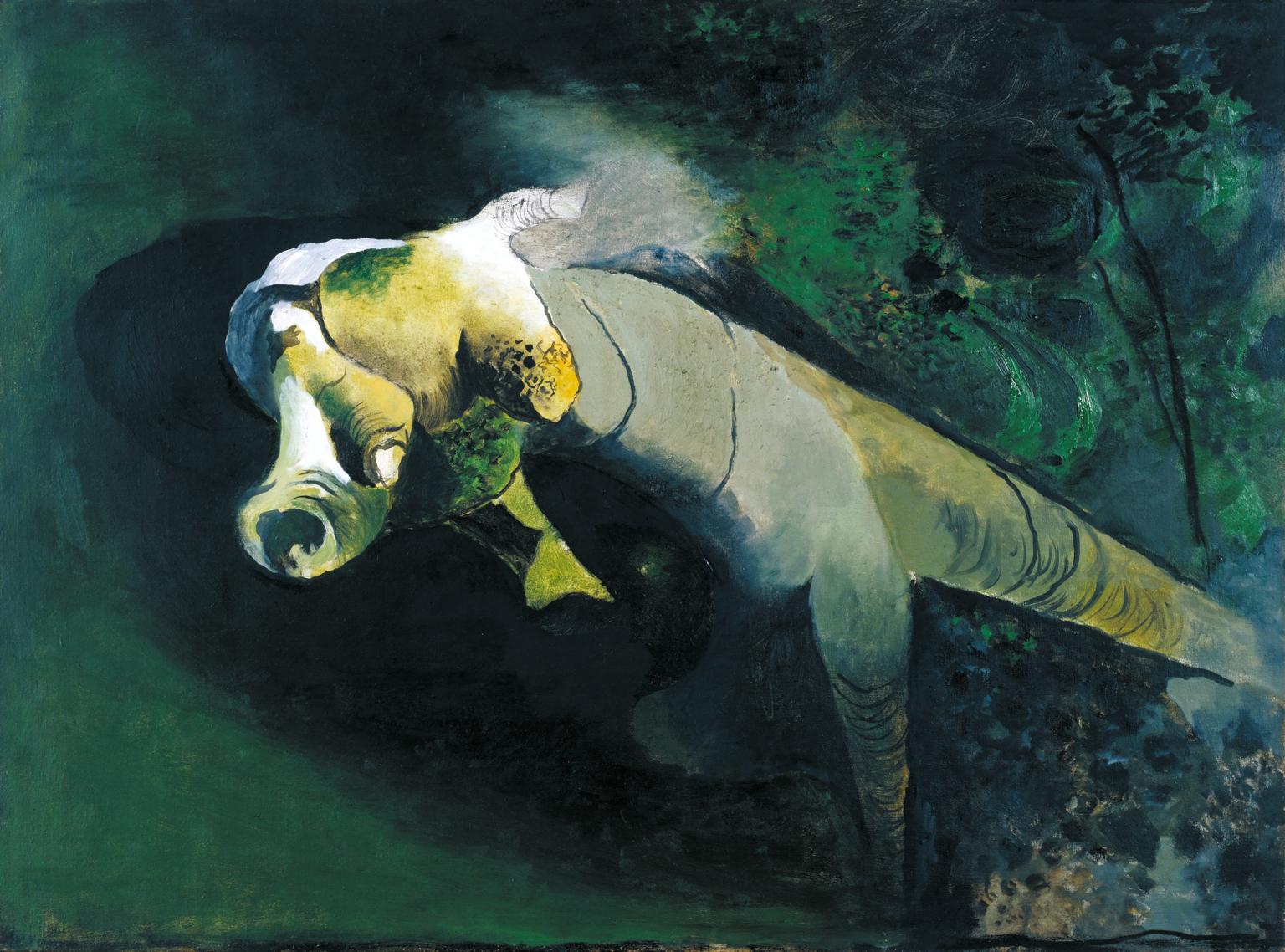
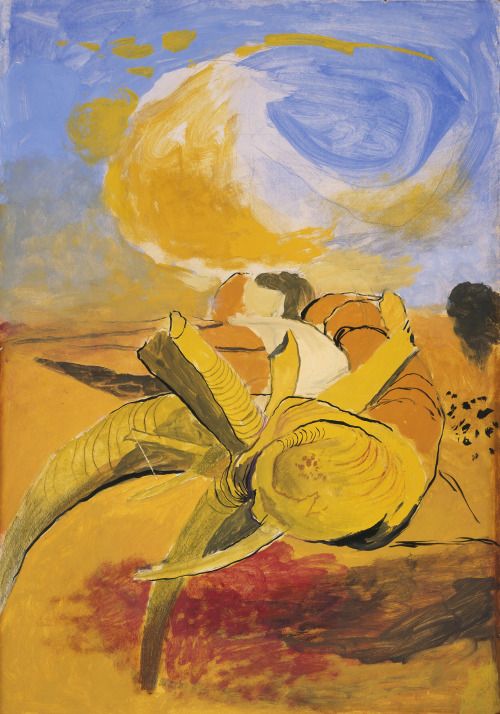
A couple of my pieces (below) will be shown at the Elemental Sculpture Park near Cirencester, Gloucestershire (The Paddocks, Somerford Keynes, Cirencester, Gloucestershire GL7 6FE from 1st April to 30th September, 10:30 - 17:00, closed Tuesday and Wednesday, last admission 16:00). Do visit if you are in the area.
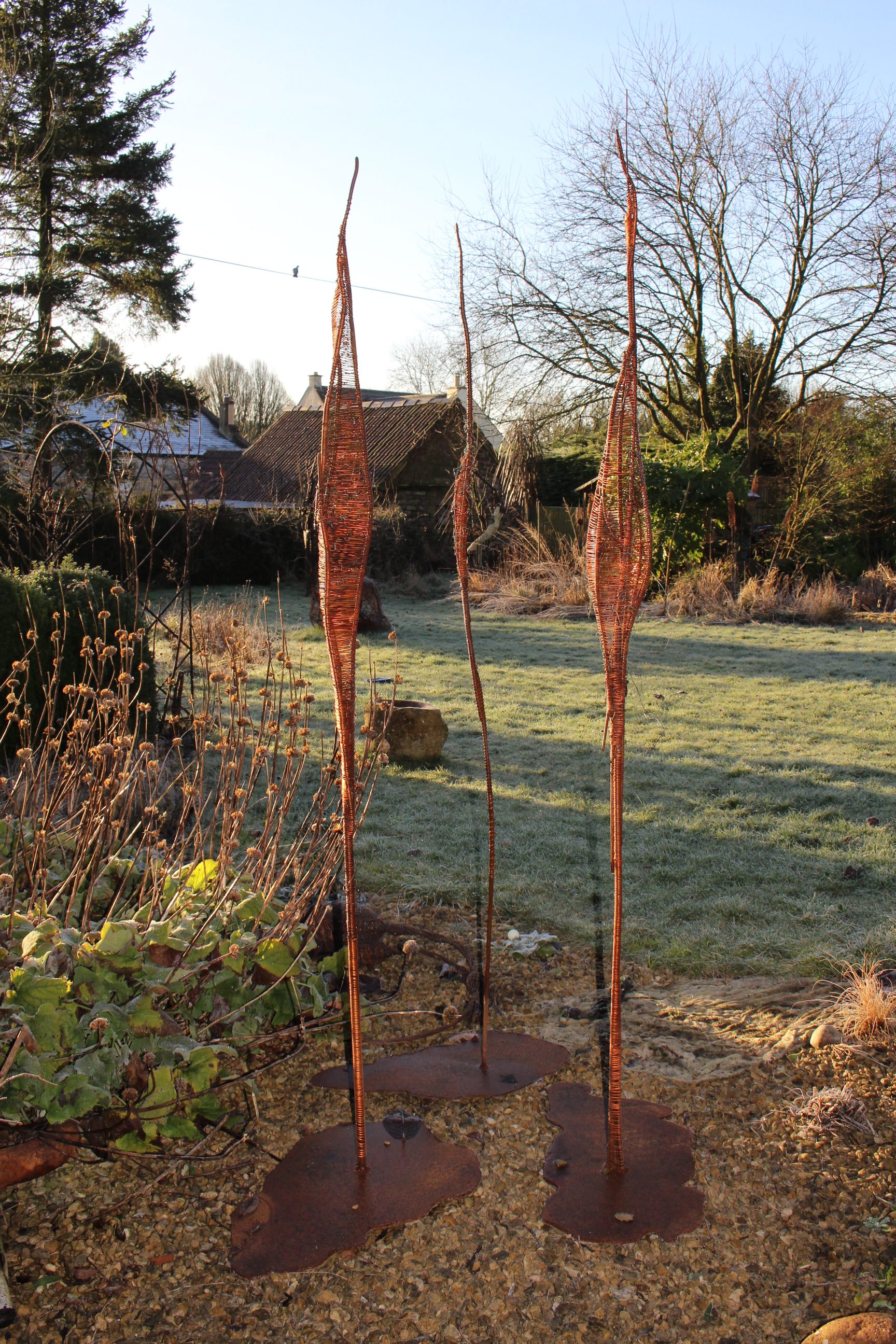
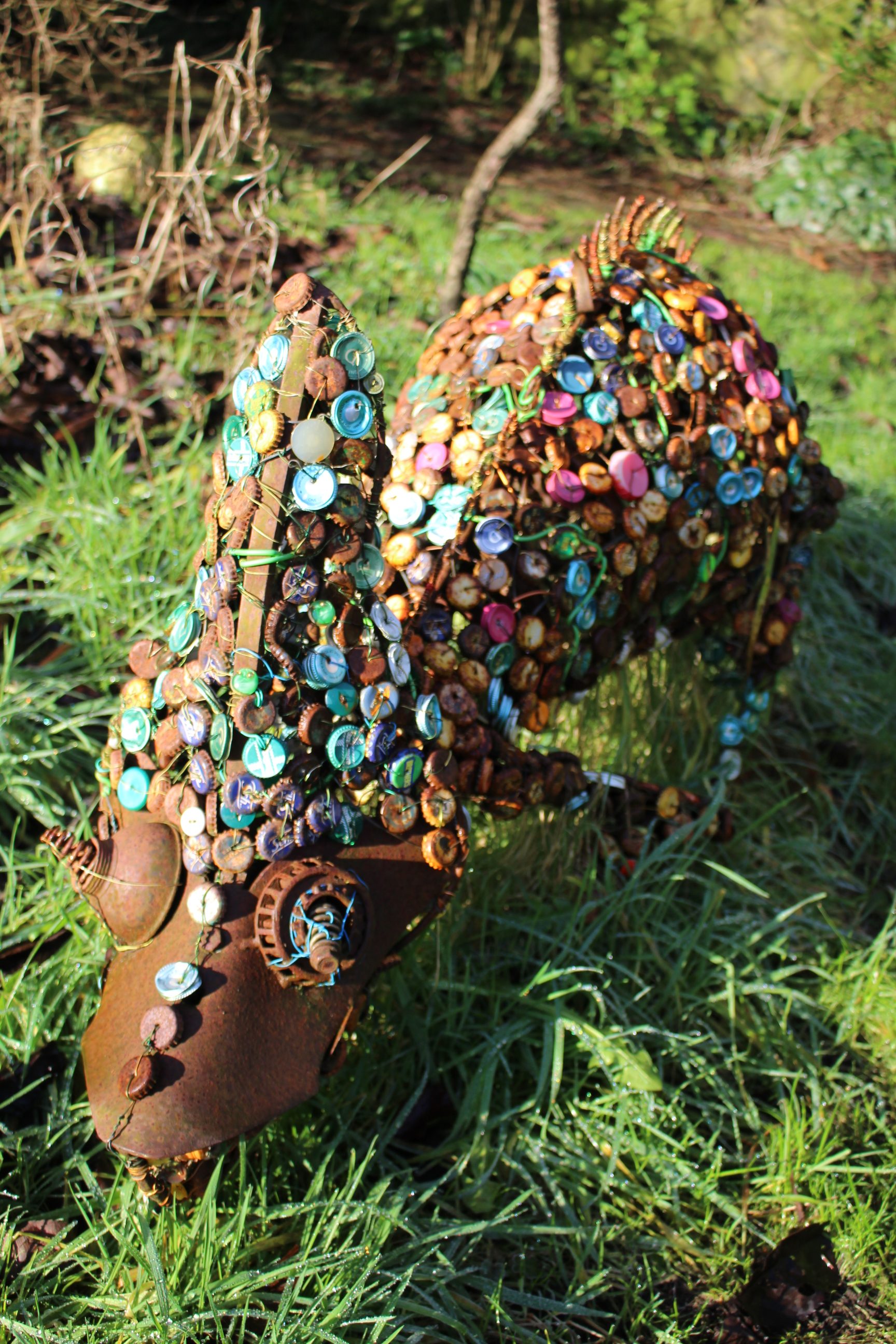
I have started invigilating at Hauser & Wirth’s The Land we Live in – The Land We Left Behind. The exhibition is a narrative about our relationship with the rural, featuring an incredible selection of artists including Archimboldo, Beatrix Potter (a lovely drawing of fungal spores which prompted me to investigate her innovative work on lichen and fungi), Samuel Palmer, Henry Moore, Mark Dion. An intriguing show and so comprehensive, it is worth several visits. As part of the exhibition there is an Honest Shop where local artisans can sell their work (£20 max). I have some small copper items for sale – enameled lichen forms, keyrings, incense holder, balls and hearts!
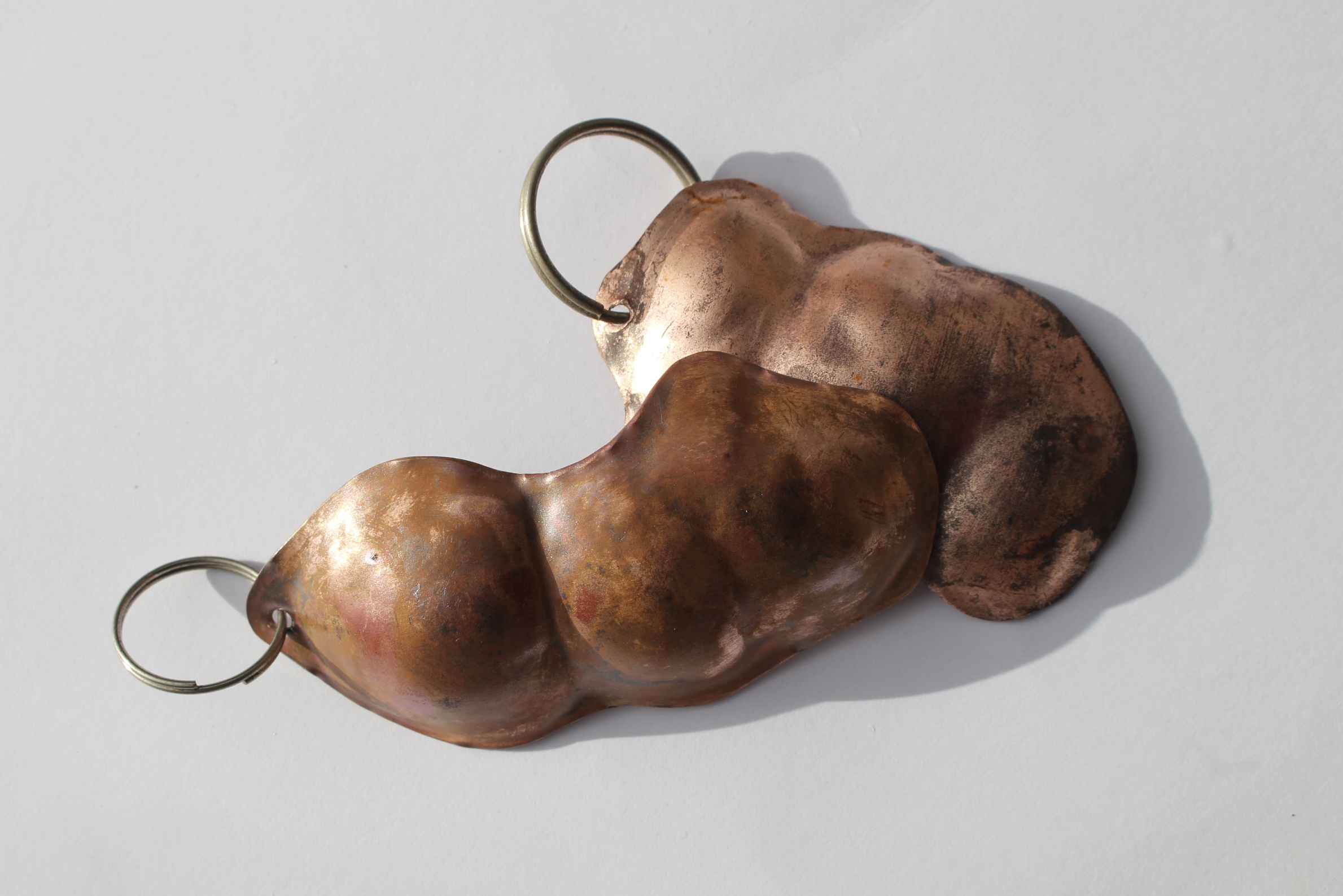
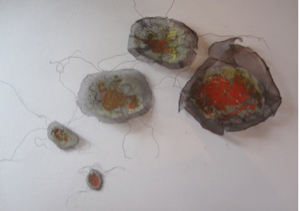
Yesterday I visited Dorothy Cross’s Glance exhibition at The New Art Centre, Roche Court, near Salisbury. I was amazed by her carved marble Bed with its gently creased sheets and soft-looking pillow hollowed by an absent head. She manages to turn a traditional medium into something very contemporary. Her body fragments - dangling feet and hand casts are also very beautiful.
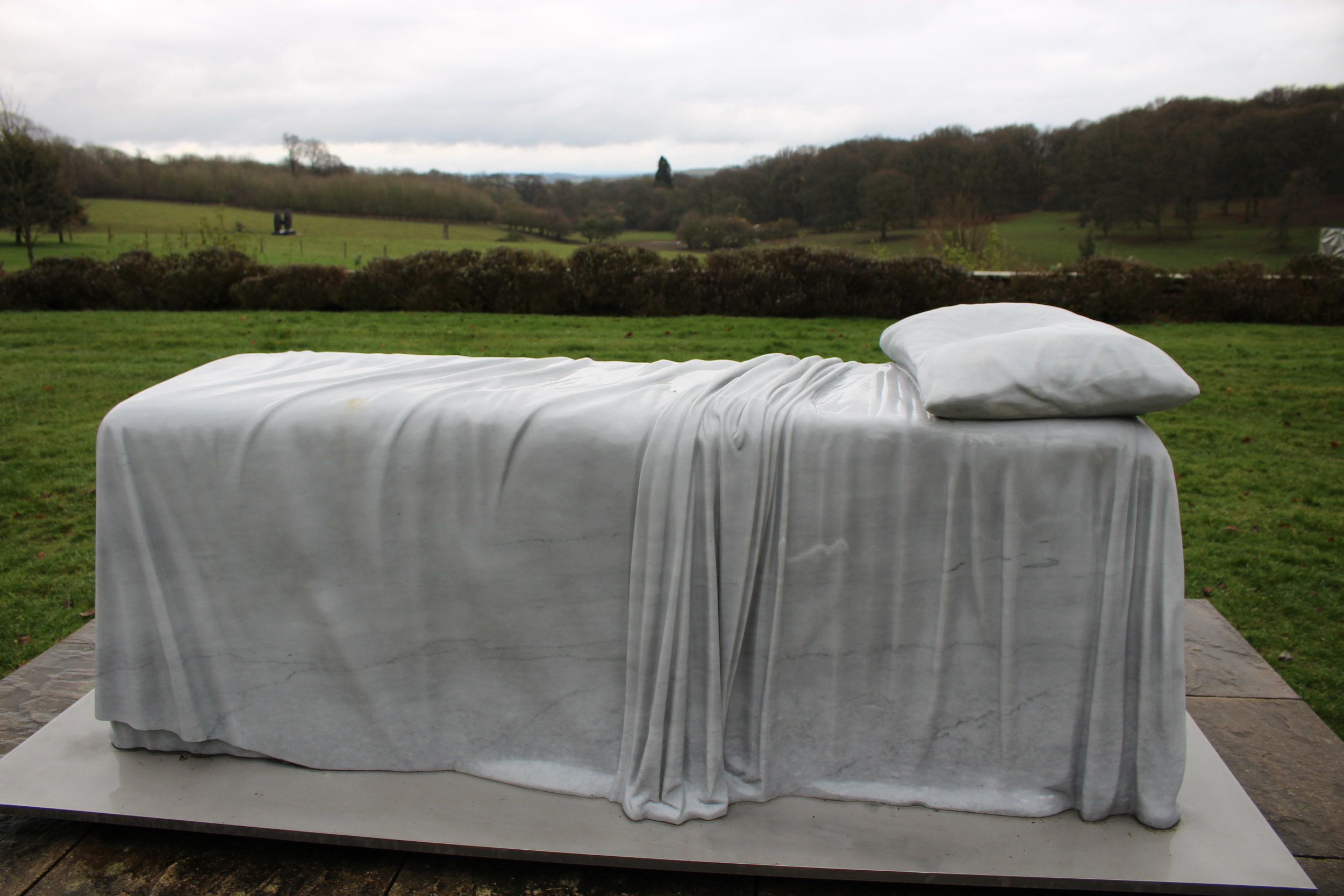
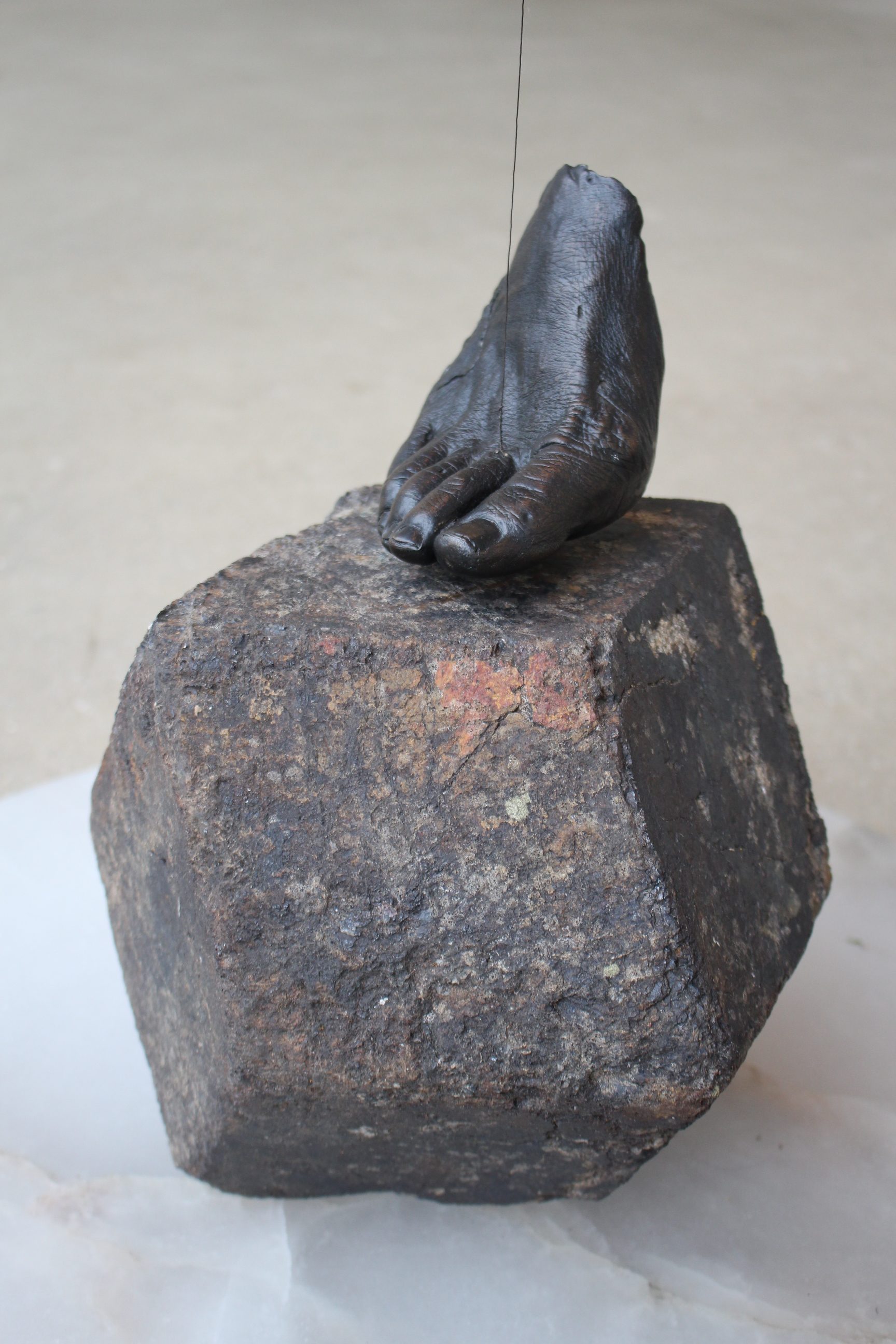
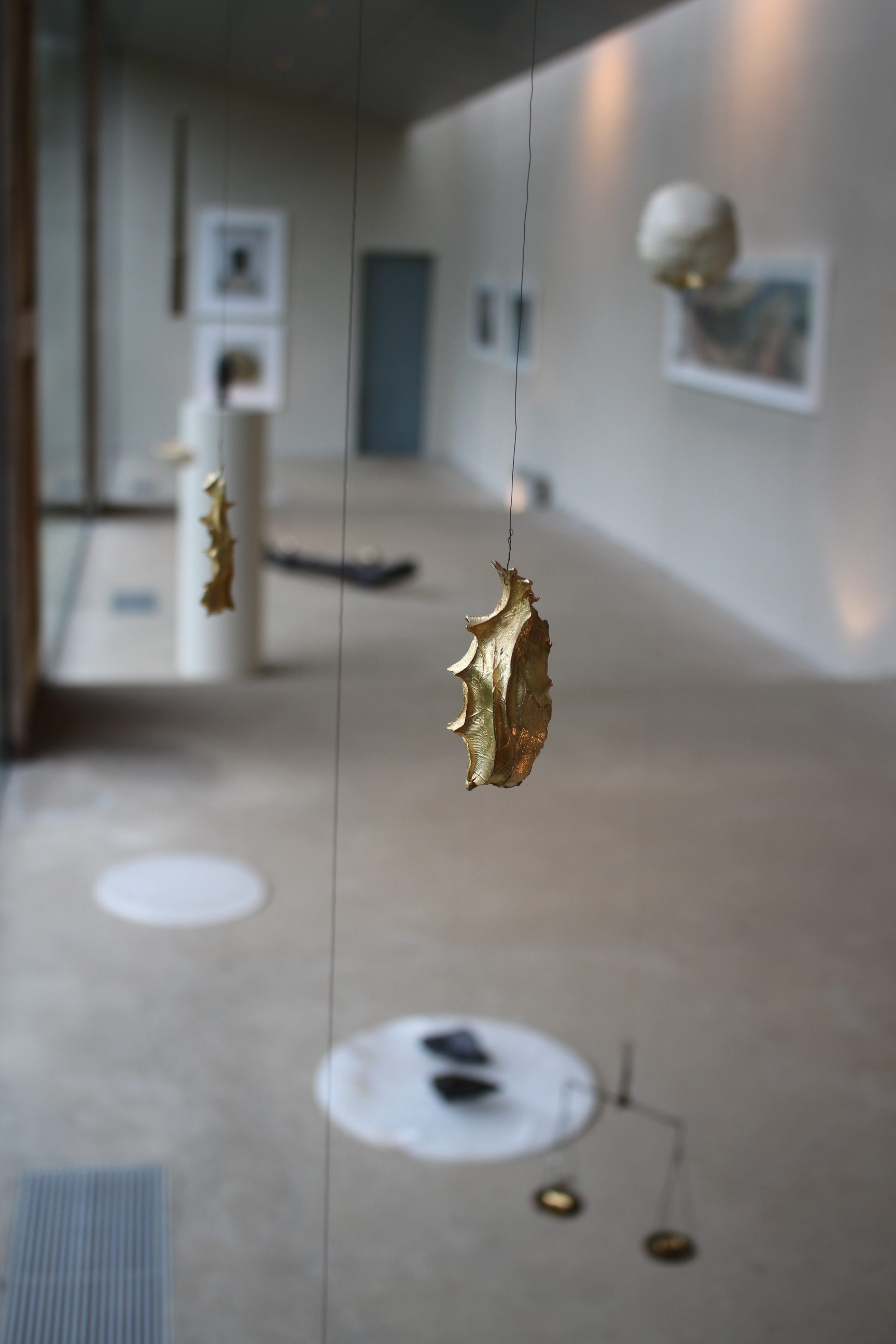
Here's to more February sunshine!

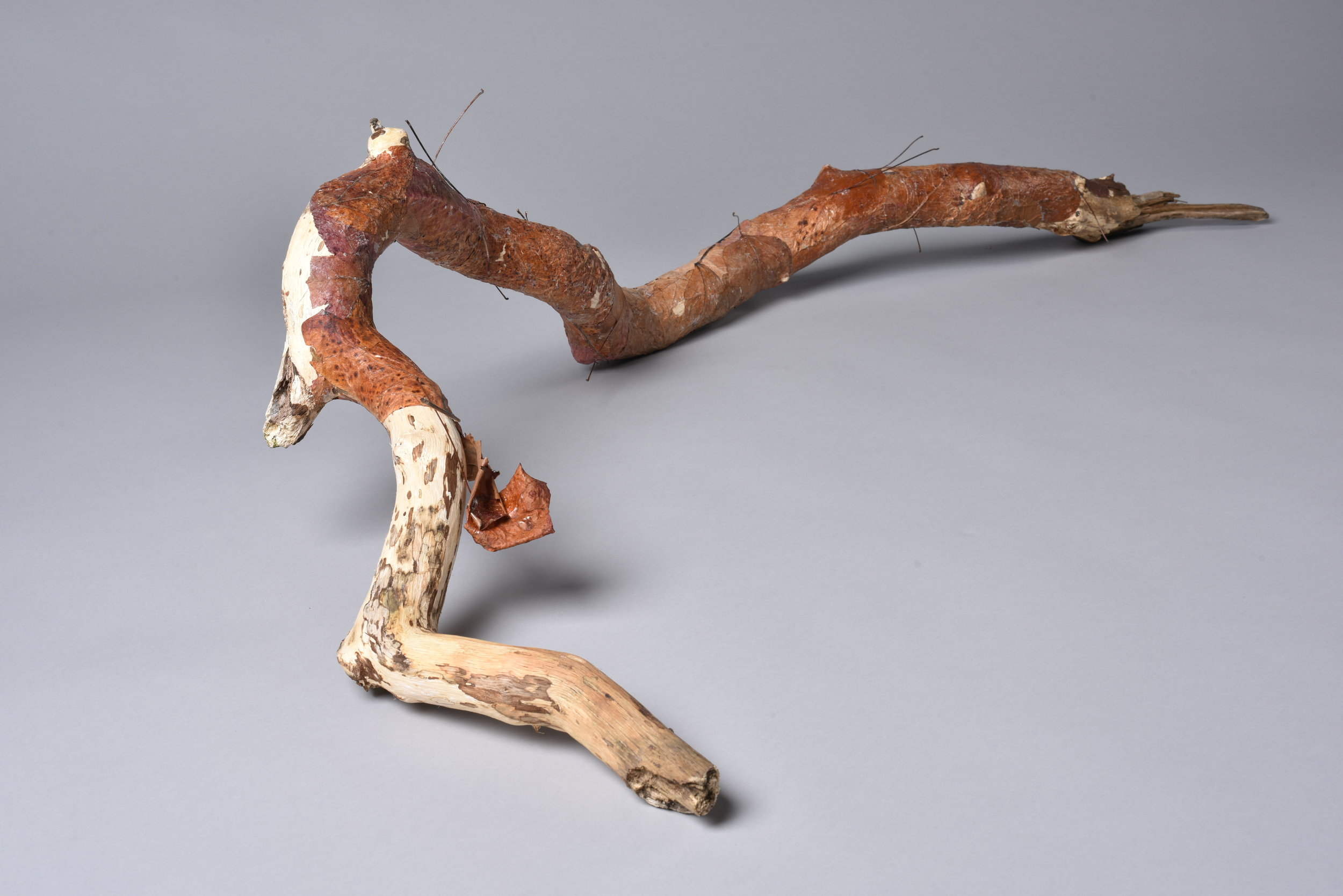 Hello to Winter and the festive season!
Hello to Winter and the festive season!












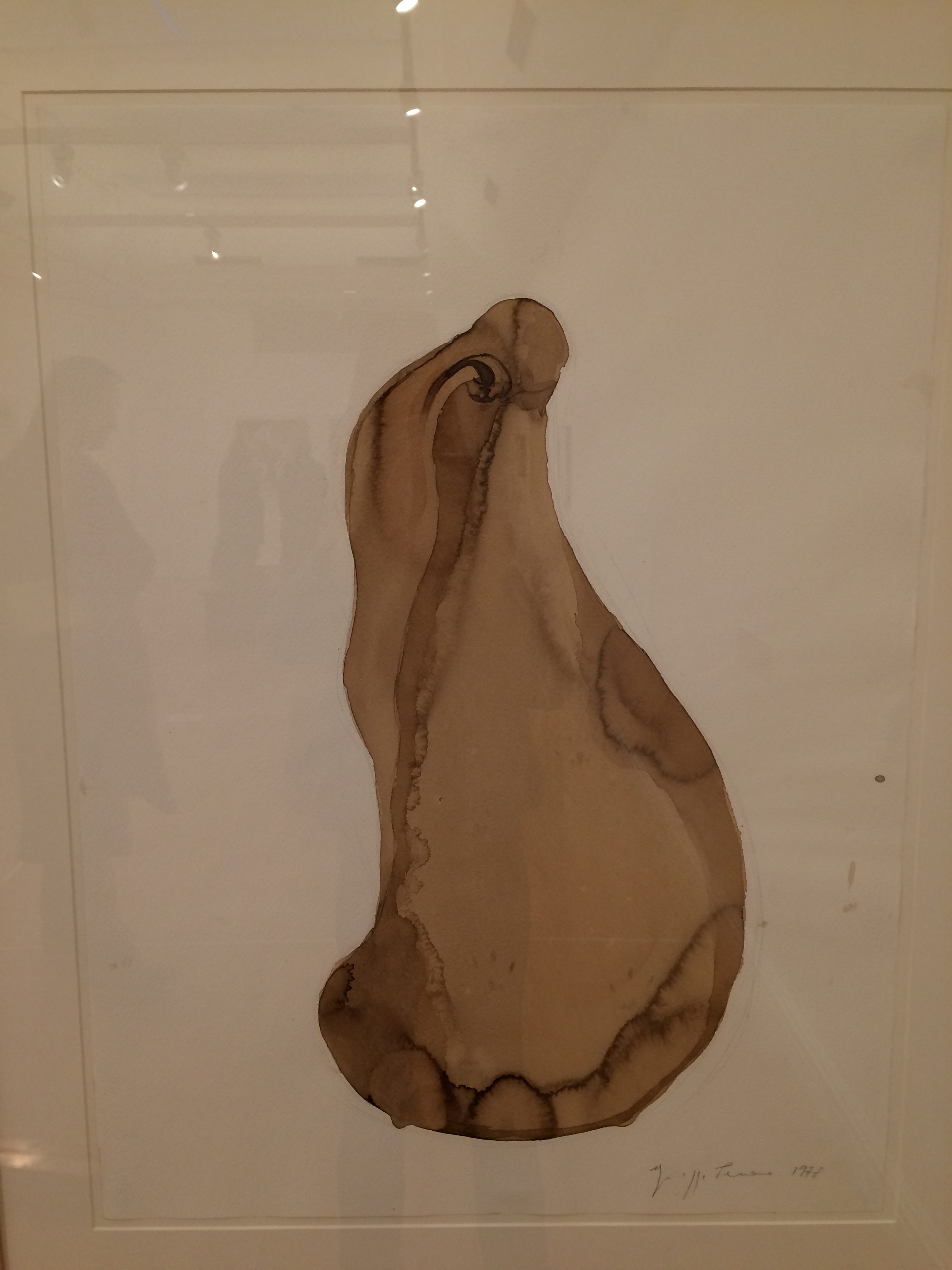

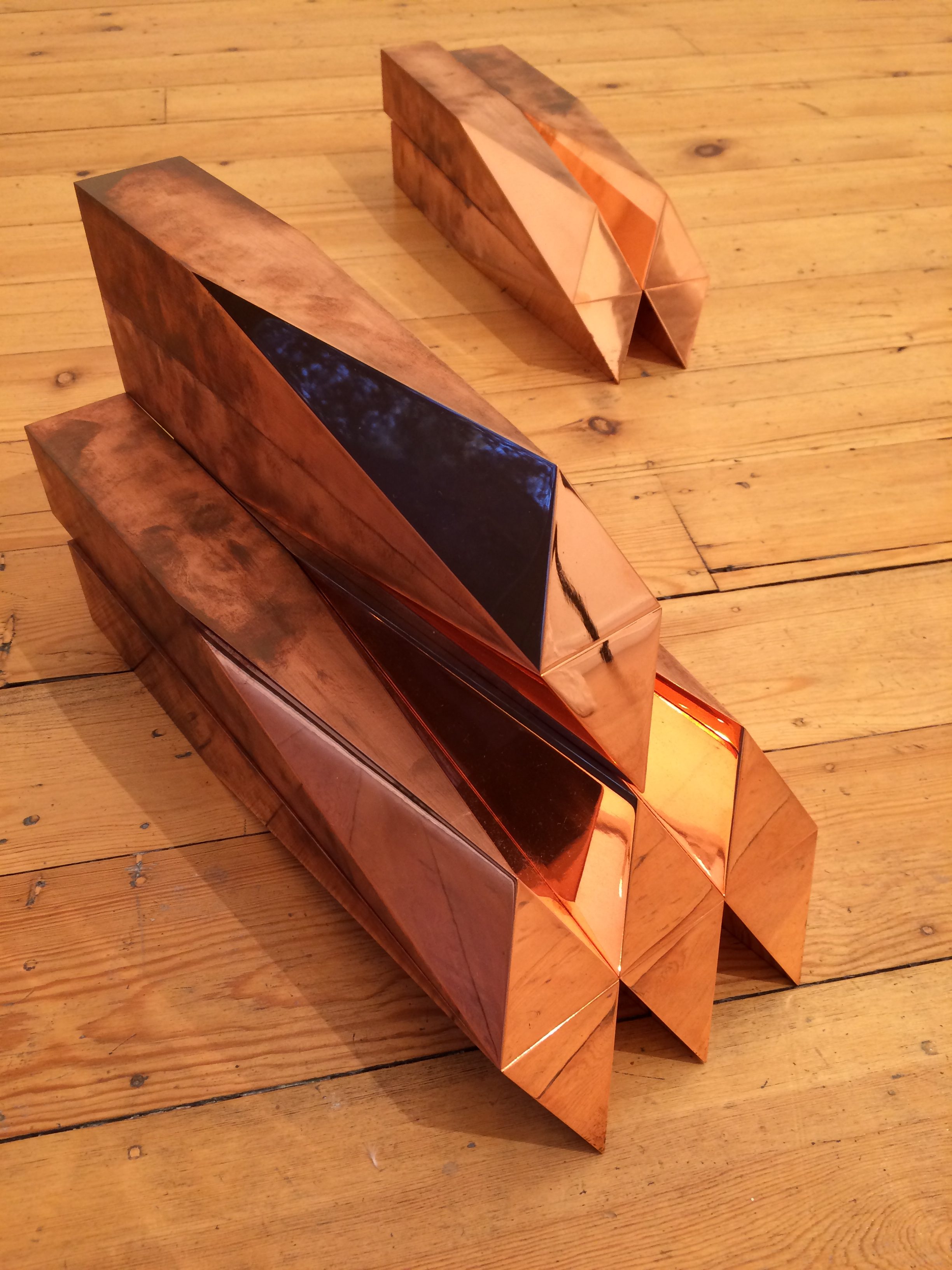











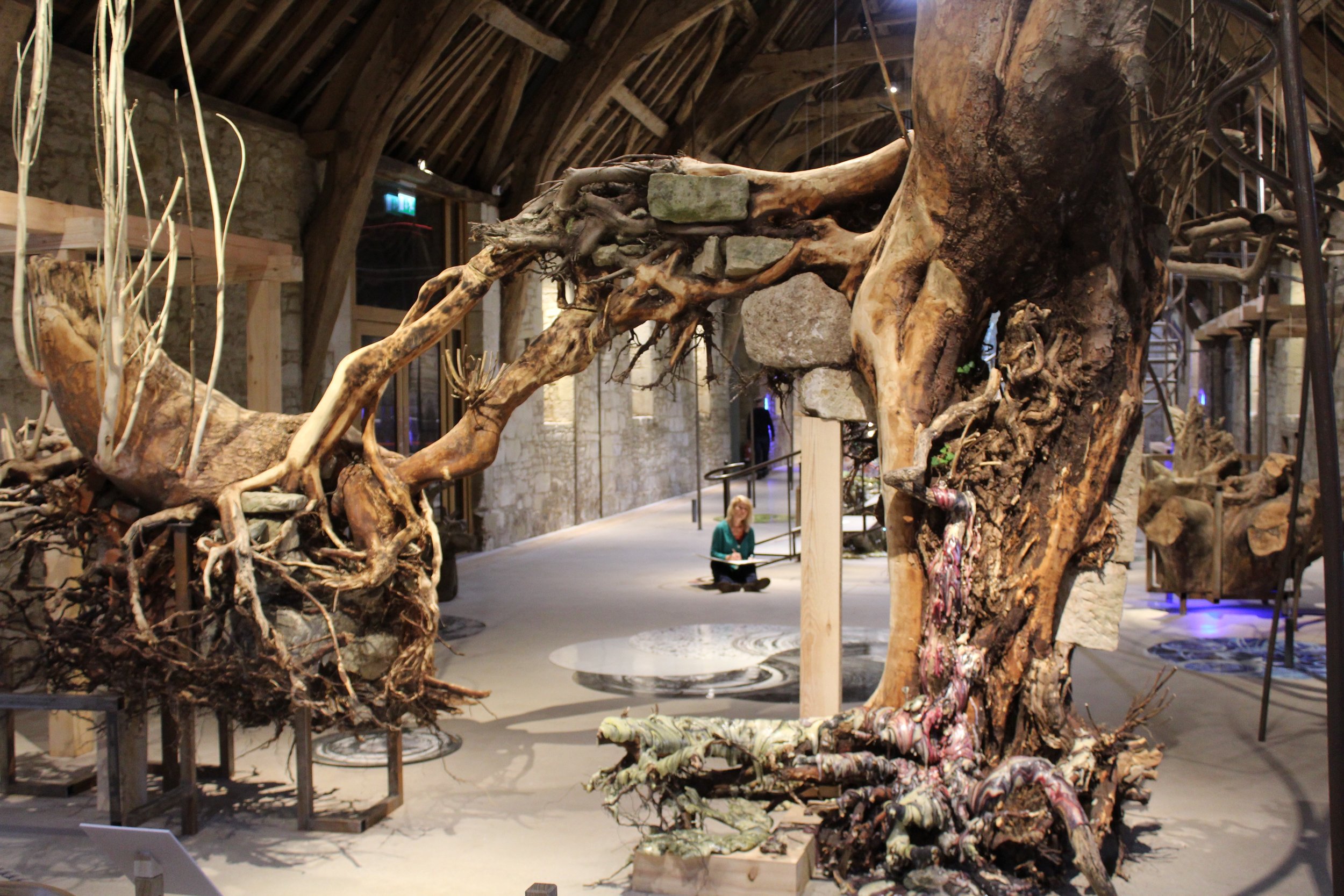 In September I attended Judy Pfaff’s talk and the launch of her new site-specific installation ‘Roots Up’ at Messums, Wiltshire. Having previously researched her online as an artist of great interest to me, it was a real thrill to see her work in reality. Pfaff sees her installations as ‘painting in 3d’. ‘Roots Up’ fills the length and height of the huge tithe barn. On entering, I was taken aback by the immensity of two extraordinary entwined tree root balls, which have naturally melded together clasping man-made stone blocks between their roots. Monumental in scale, nature’s power is unequivocal. Steel rods wiggle and writhe – their man-altered forms communing with the architecture and nature. Colourful concentric rings are encircled by 12 hovering vessels, a fantastical mix of green to pink sinuous melted plastic and expanded foam spilling out. I was reminded of sundials, crop circles, the solar system and celtic patterns. The recognisable influence of Salisbury Cathedral is represented in a fluted architectural column reaching to the ceiling. Pfaff’s work oozes, spews and flows with energy and vitality, which I love.
In September I attended Judy Pfaff’s talk and the launch of her new site-specific installation ‘Roots Up’ at Messums, Wiltshire. Having previously researched her online as an artist of great interest to me, it was a real thrill to see her work in reality. Pfaff sees her installations as ‘painting in 3d’. ‘Roots Up’ fills the length and height of the huge tithe barn. On entering, I was taken aback by the immensity of two extraordinary entwined tree root balls, which have naturally melded together clasping man-made stone blocks between their roots. Monumental in scale, nature’s power is unequivocal. Steel rods wiggle and writhe – their man-altered forms communing with the architecture and nature. Colourful concentric rings are encircled by 12 hovering vessels, a fantastical mix of green to pink sinuous melted plastic and expanded foam spilling out. I was reminded of sundials, crop circles, the solar system and celtic patterns. The recognisable influence of Salisbury Cathedral is represented in a fluted architectural column reaching to the ceiling. Pfaff’s work oozes, spews and flows with energy and vitality, which I love.